In January 1972, while attempting to return to a duty station in Iceland, American Air Force veteran John Beach found himself ‘stranded’ in the City of Luxembourg due to severe weather conditions in Denmark and Iceland. He roamed the streets of Luxembourg and documented the stunning beauty that faded with time.
I had less than $20US, but had several rolls of film and my Nikon F. For the next three days I walked the streets of the city recording the scenes. As it was winter, there were very few people out and about, just an occasional child or two. It proved to be an enjoyable experience, nonetheless.
#1 The Old Quarters of Luxembourg City, Jan 1972
#2 Fish market, Luxembourg City, Jan 1972.
#3 The promise of renewal, Luxembourg City, Jan 1972
#4 A Spanish Turret Overlooks Luxembourg City, Jan 1972
#5 In the Business District of Old Luxembourg City, Jan 1972
#6 Old Luxembourg City, Jan 1972
#7 Old Luxembourg City, Jan 1972
#8 The Winding Road. Old Quarters of Luxembourg City, 1972
#9 The old quarter of Pfaffenthal, Luxembourg City, Jan 25, 1972.
#10 Mir wëlle bleiwe wat mir sinn (We want to remain what we are), Fëschmaart (“Fish market”), Luxembourg City, Jan 1972
#11 The Citadel (at top of road) was once part of Fortress Luxembourg dating back to 936 A.D. Luxembourg City, Jan 1972
#12 National Monument to Luxembourg Solidarity, Luxembourg City, Jan 1972
#13 Fort Thüngen (Three Acorns). Luxembourg City, Jan 1972
#14 Fort Thüngen (Three Acorns). Luxembourg City, Jan 1972
#15 Parc des Trois Glands Clausen. Luxembourg City, Jan. 1972
#16 The Rail Viaduct Above the old City of Luxembourg, Jan 1972
#17 The Daily Freight Through Luxembourg, Jan 1972
#18 The Old Quarter of Pfaffenthal, Luxembourg City, Jan. 1972
#19 Looking Across the Rue du Pont Bridge, Luxembourg City, Jan 1972
#20 View from the Rue du Pont bridge, The Old Quarter of Pfaffenthal, Luxembourg City, Jan. 1972
#21 On the Alzett River Front, The Old Quarter of Pfaffenthal, Luxembourg City, Jan 1972
#22 The Bridge over the Alzette in Luxembourg-Pfaffenthal pointing to the Saint Matthew Church, Luxembourg City, Jan. 1972
#23 The Old Quarter of Pfaffenthal, Luxembourg City, Jan. 1972
#24 Poppa with granddaughter, The Old Pfaffenthal, Luxembourg City, 1972
#25 Strolling down Rue du Pont in the Old Quarter of Pfaffenthal, Luxembourg City, Jan 1972
#26 Young boy walking on Rue Mohrfels about to cross Rue du Pont.
#27 The Fortifications of Luxembourg City, Jan 1972
#28 The Fortifications of Luxembourg City, Jan 1972
#29 Dead End (Luxembourg City, Jan 1972)
#30 Luxembourg City, Jan 1972
#31 Cobblestone Streets of the Old Quarters of Pfaffenthal, Luxembourg City, Jan 1972
#32 The small back streets in the Old Quarter of Pfaffenthal, Luxembourg City, 1972.
#33 In the Laurent Menager Street in Luxembourg-Pfaffenthal. Jan 1972
#34 Cobblestone Streets of the Old Quarter of Pfaffenthal, Luxembourg City, Jan 1972
#35 The girl in the window. Old Luxembourg City, Jan 1972
#36 Castle, Luxembourg City, Jan 1972
#37 A global view of the lower district of Luxembourg-Pfaffenthal featuring the GD Charlotte Bridge, The Vauban Towers, The Vauban barracks and the Civil Hospita. Luxembourg City, Jan 1972
#38 The Old Quarters and the Grand Duchess Charlotte Bridge, Luxembourg City, Jan 1972.
#39 The “Hiel”-valley in the lower district of Luxembourg-Pfaffenthal showing the Hiel-gate, the railway bridge and the primary school. Luxembourg City, Jan 1972.
#40 A Tree in Winter, Luxembourg City, Jan 1972
#41 These Towers formed the Porte du Pfaffenthal, the fortified gate into the city dating back to 1685. Luxembourg City, Jan 1972
#42 A Birds Eye View, Luxembourg City, Jan 1972
#43 Luxembourg City, Jan 1972
#44 In the Business District of Old Luxembourg City, Jan 1972
#45 National Monument to Luxembourg Solidarity, Luxembourg City, Jan 1972
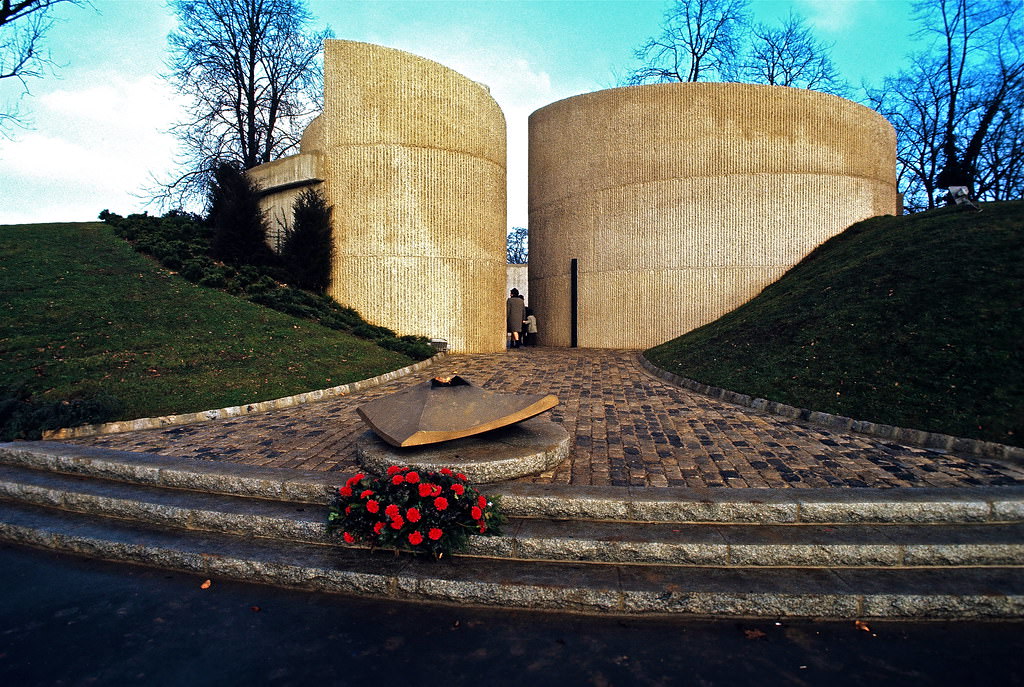
This Monument commemorates the dead of the Second World War and recalls the resistance and the solidarity of the Luxembourg nation in the face of the Nazi occupation. The paved inner courtyard symbolizes prisons, concentration camps, and barracks. An ordinary, chiseled stone represents the war victims. An eternal flame burns in front of the monument.


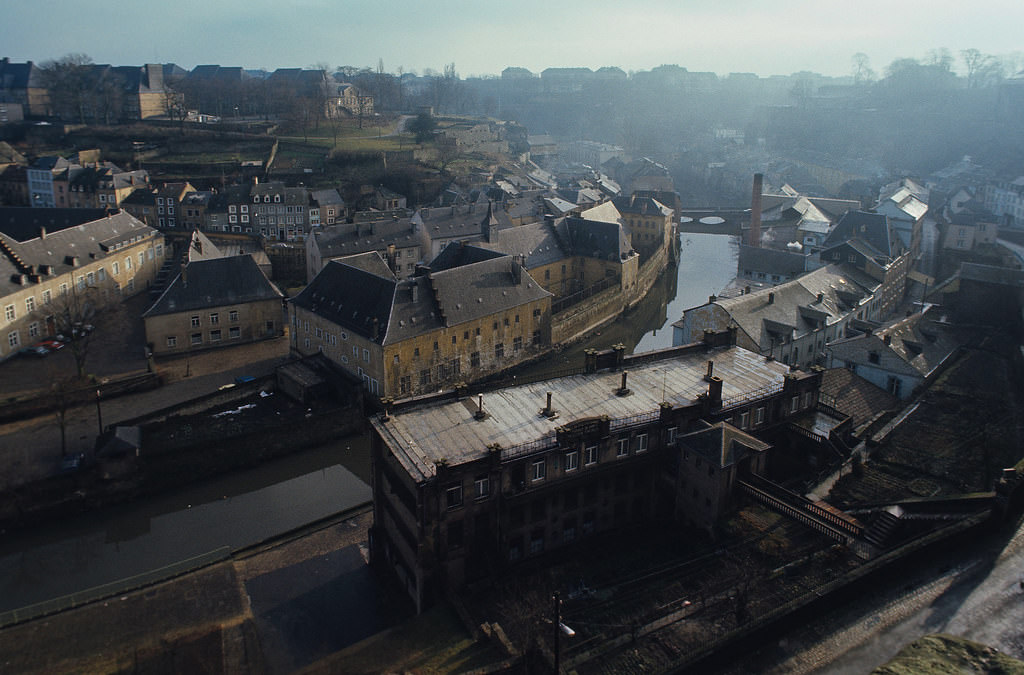
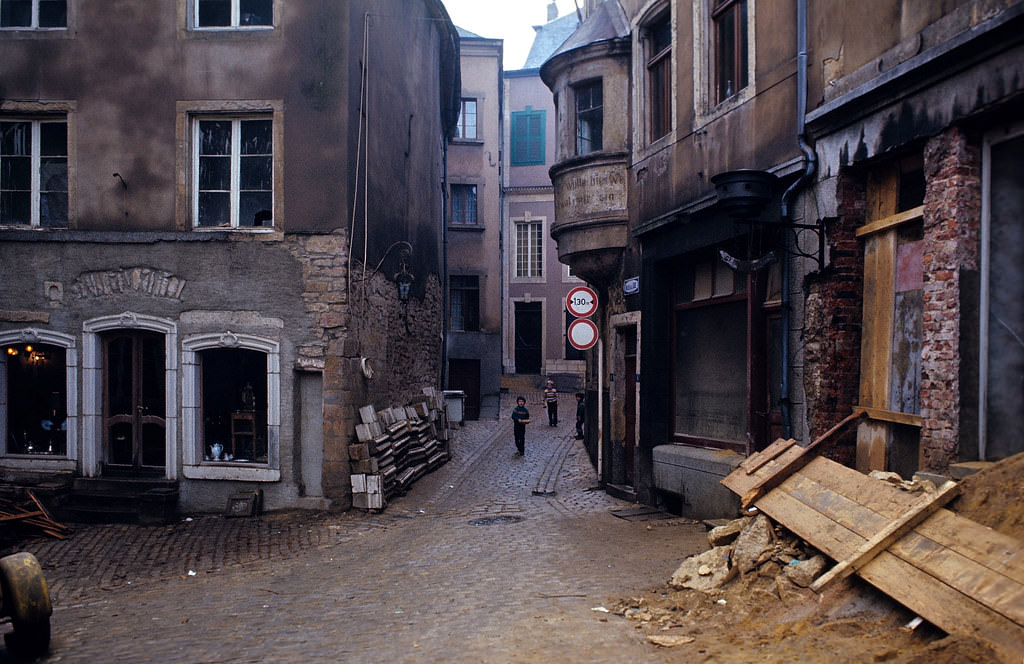
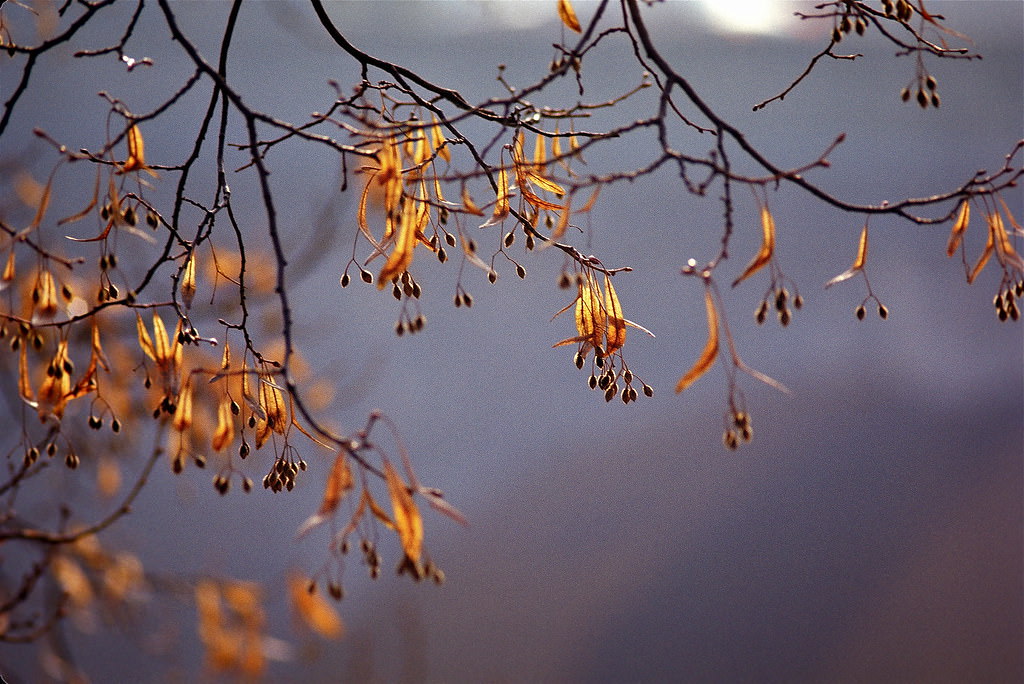
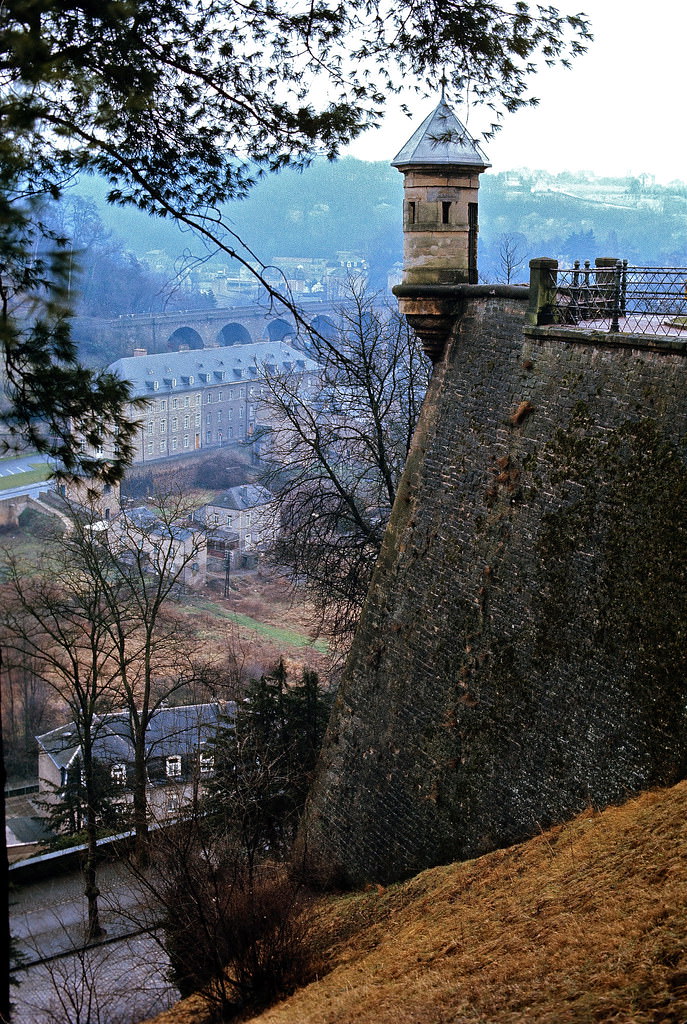
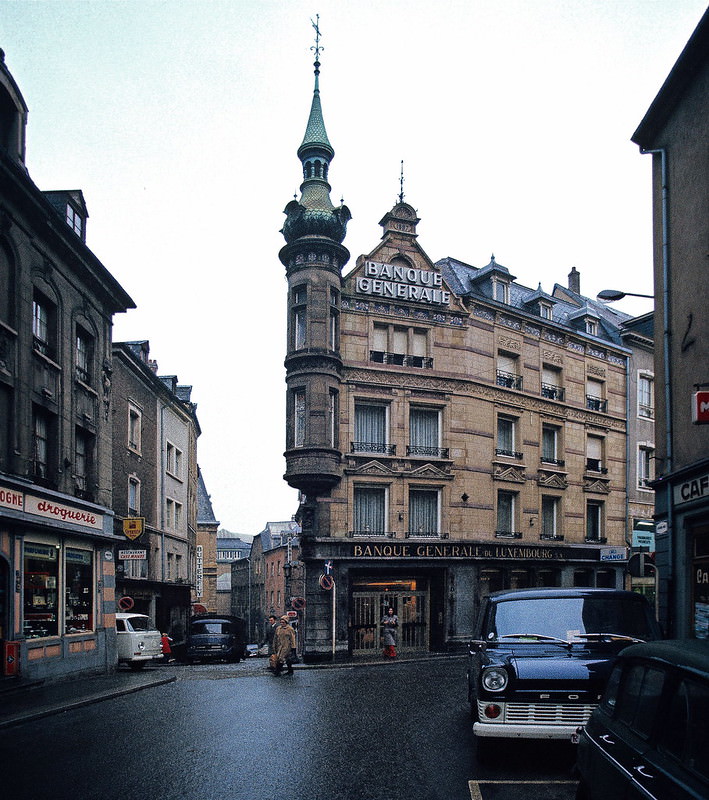
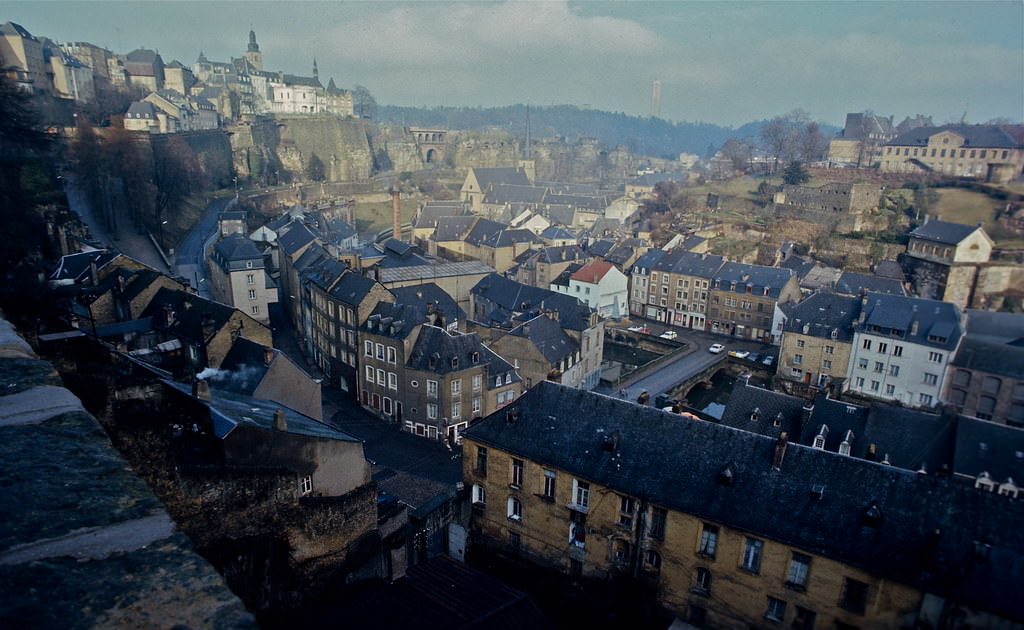
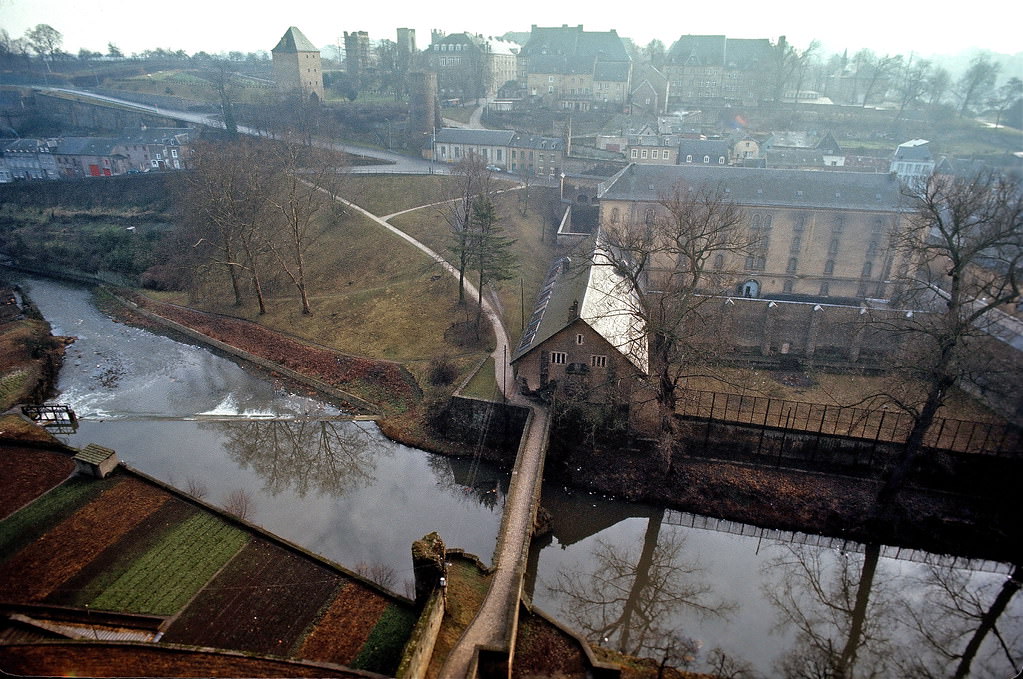
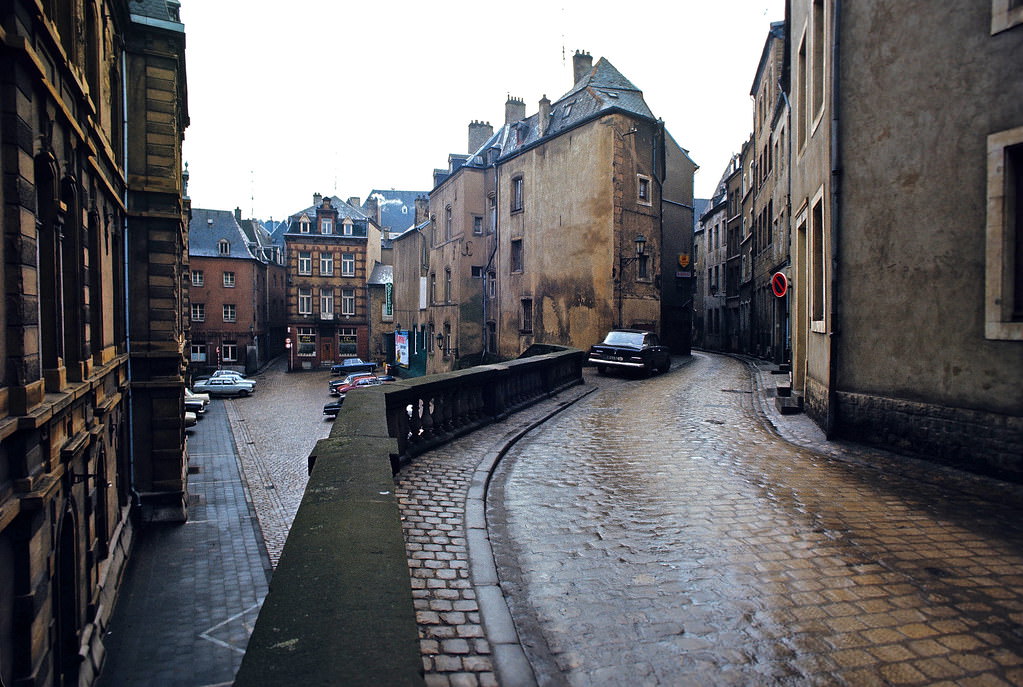
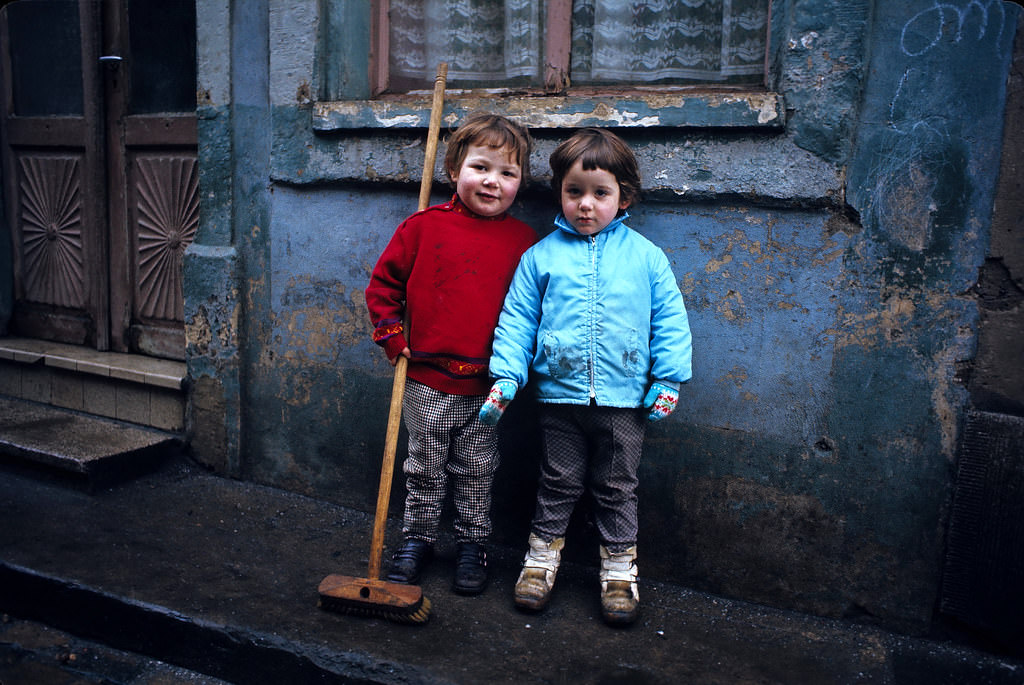
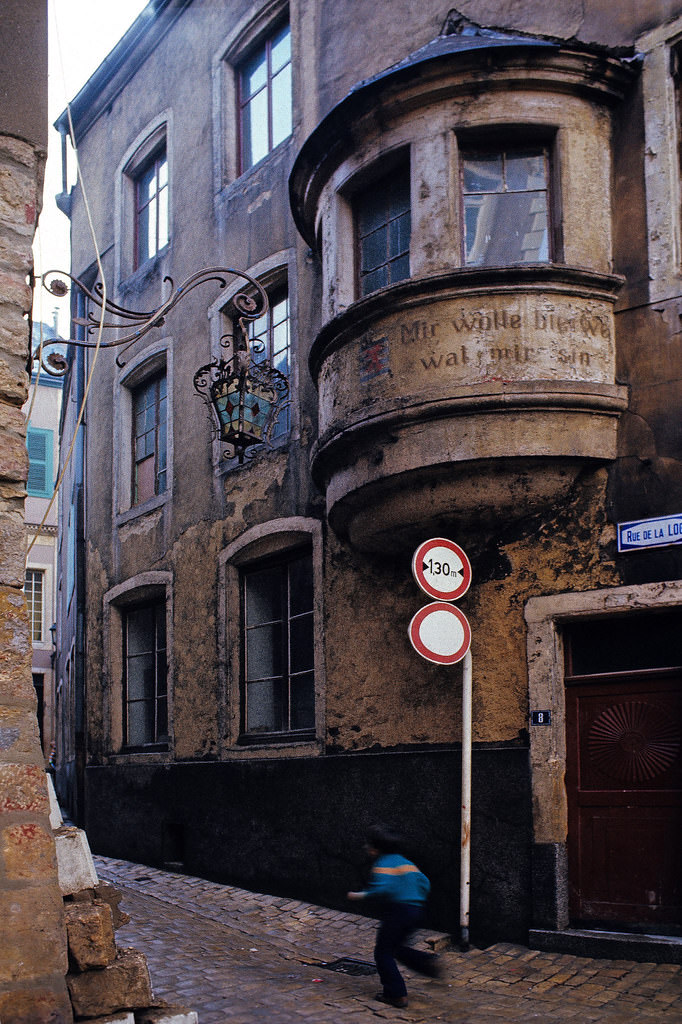
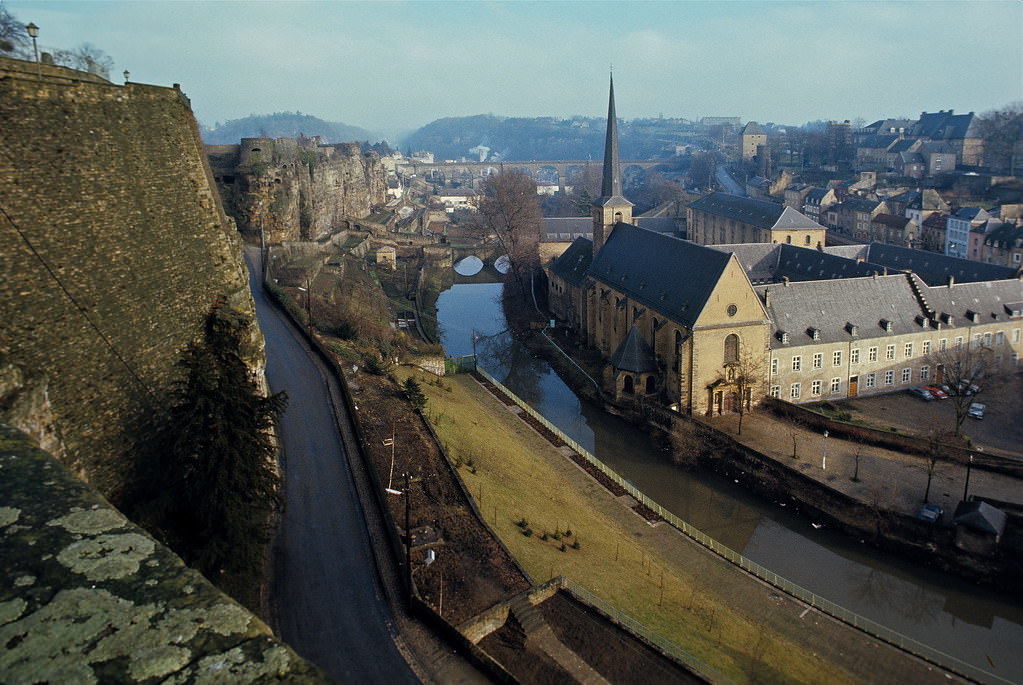
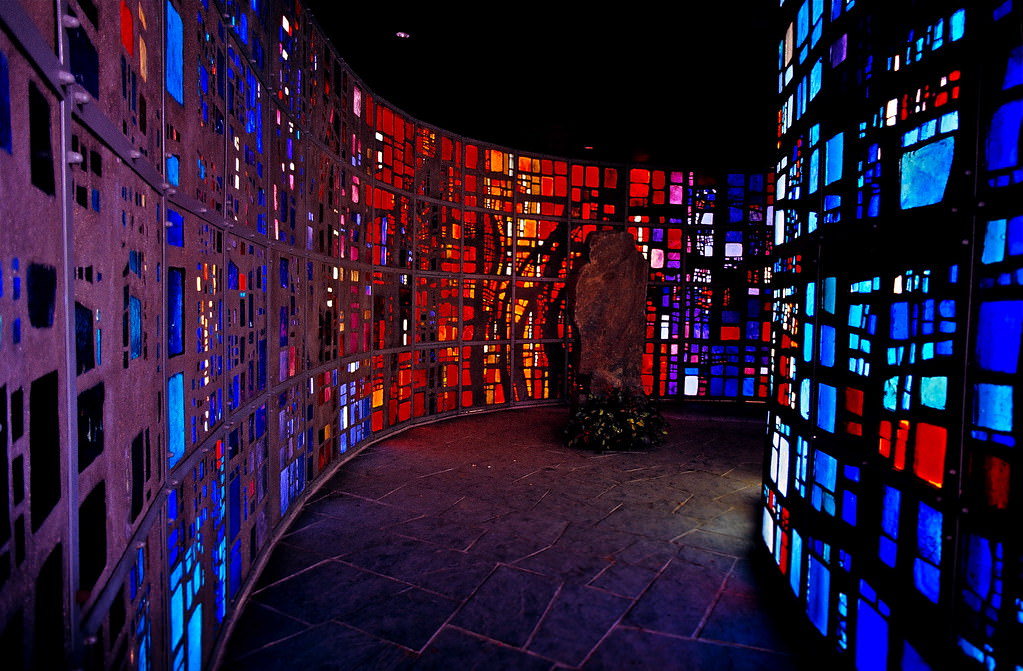
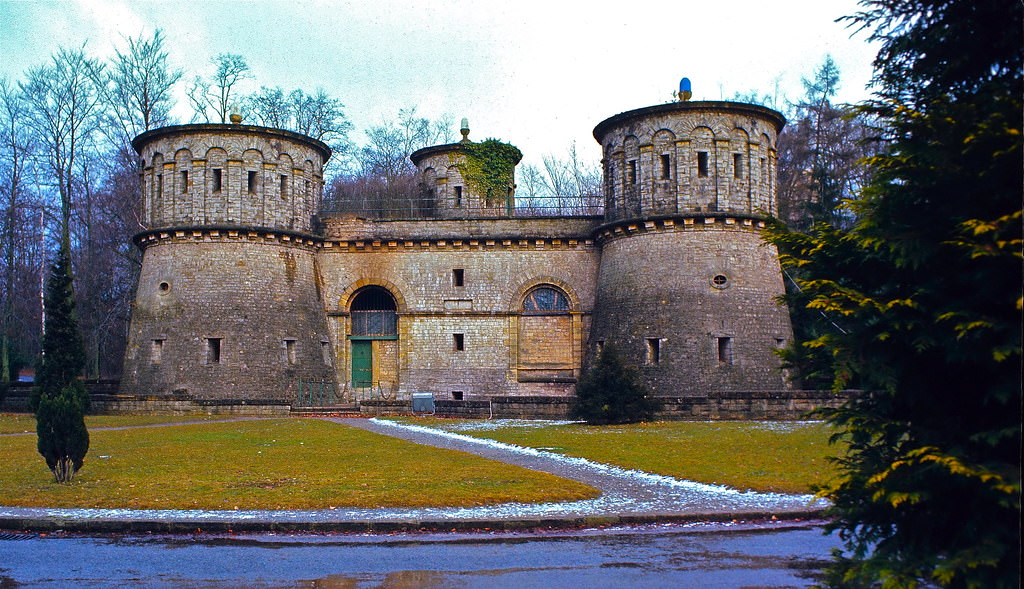
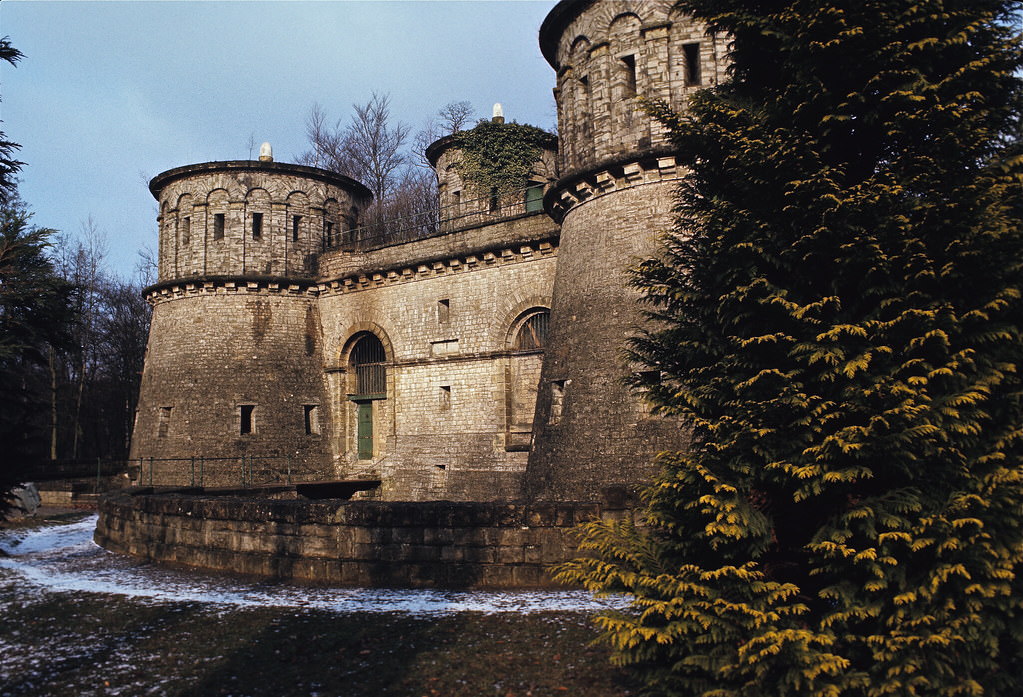
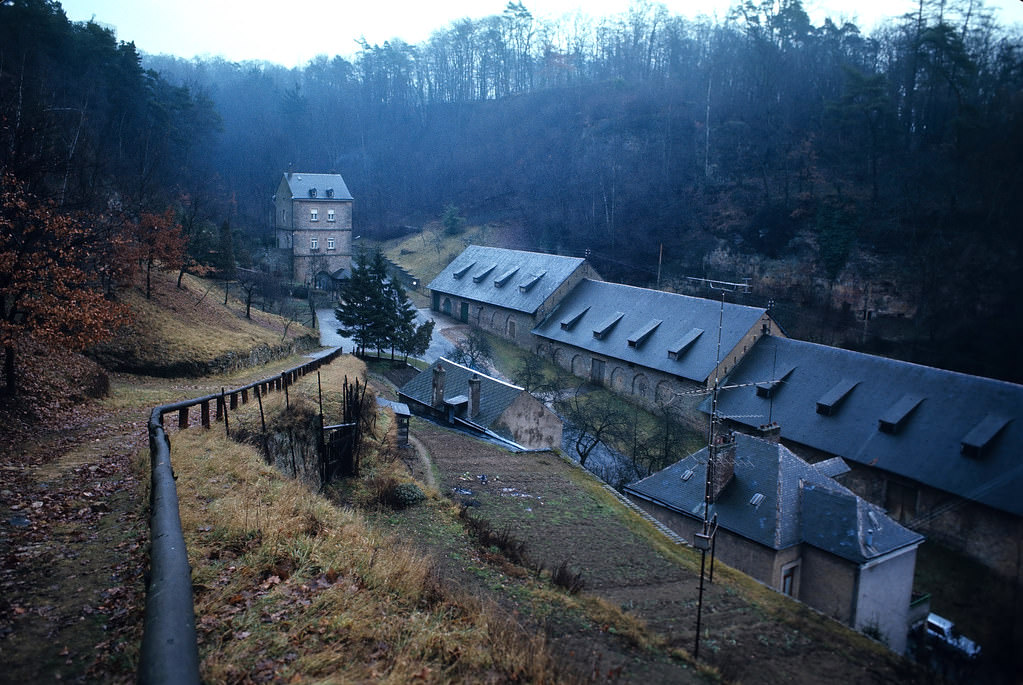
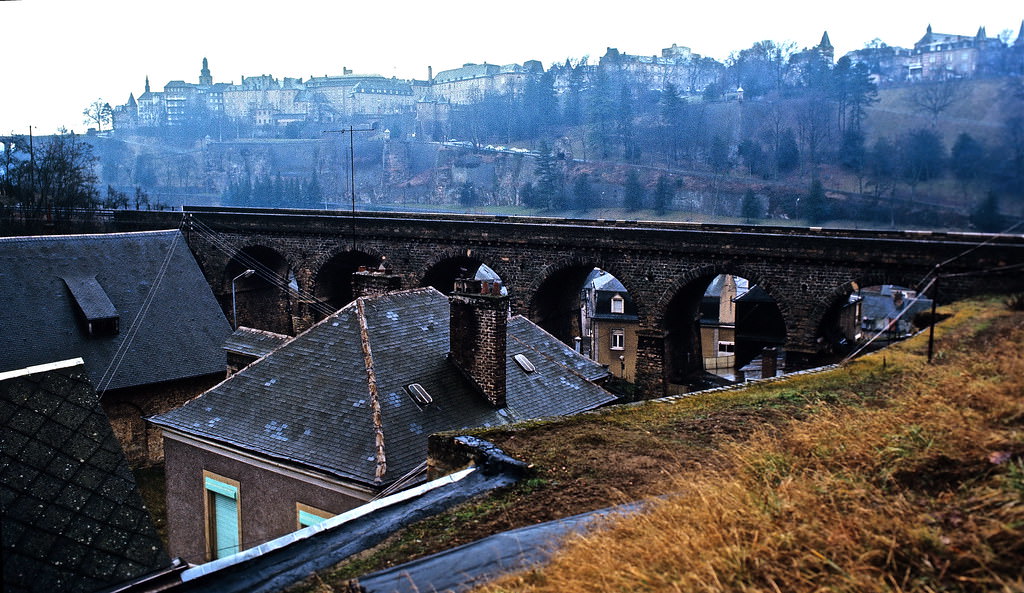
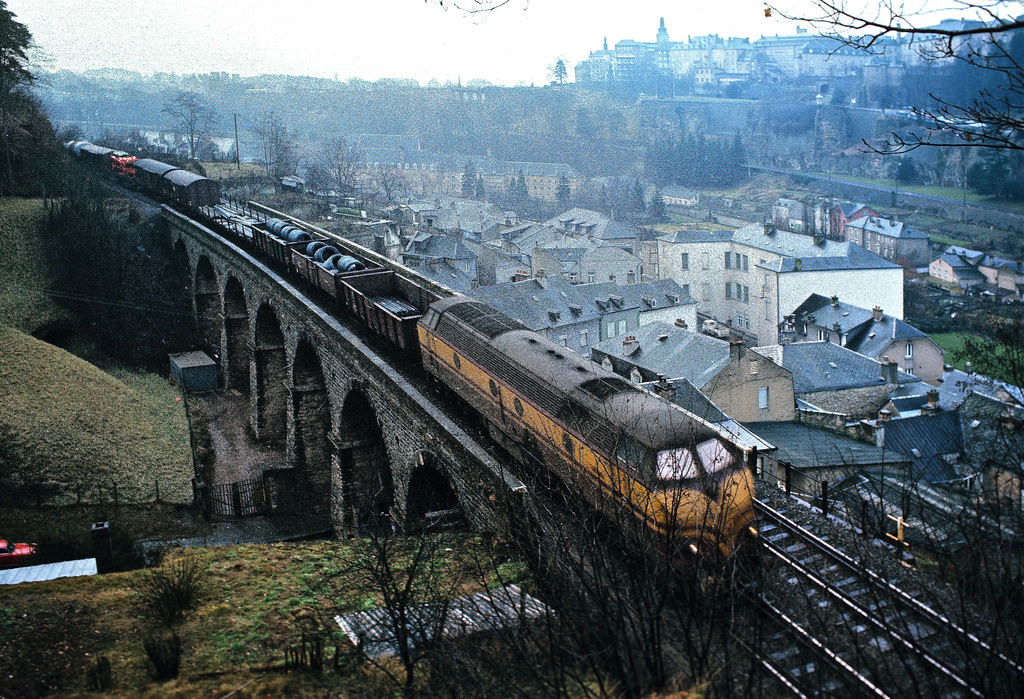
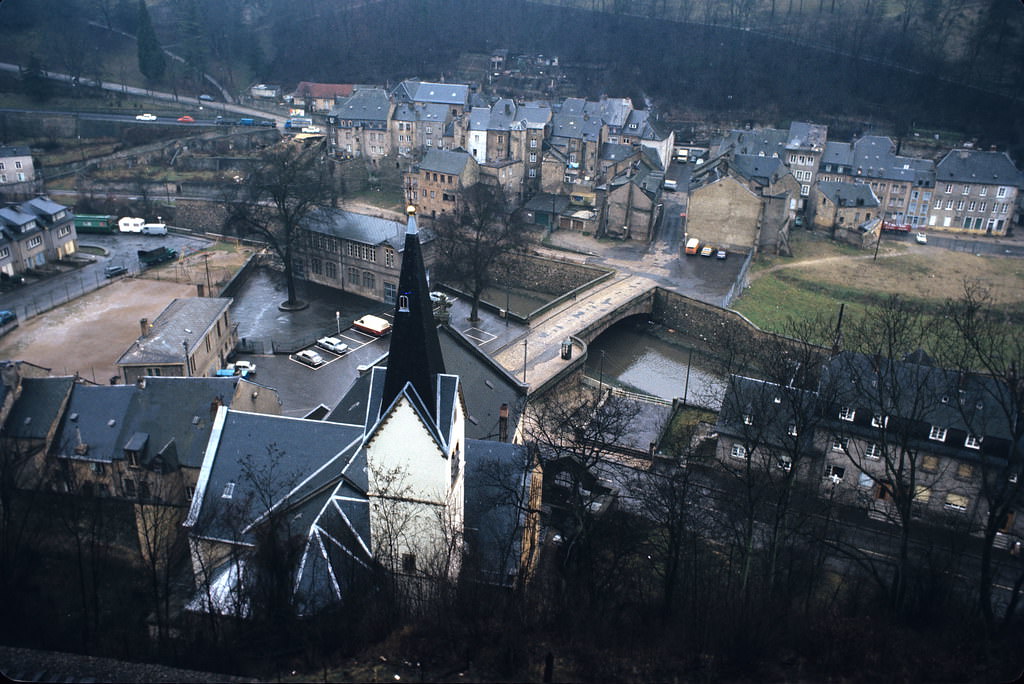
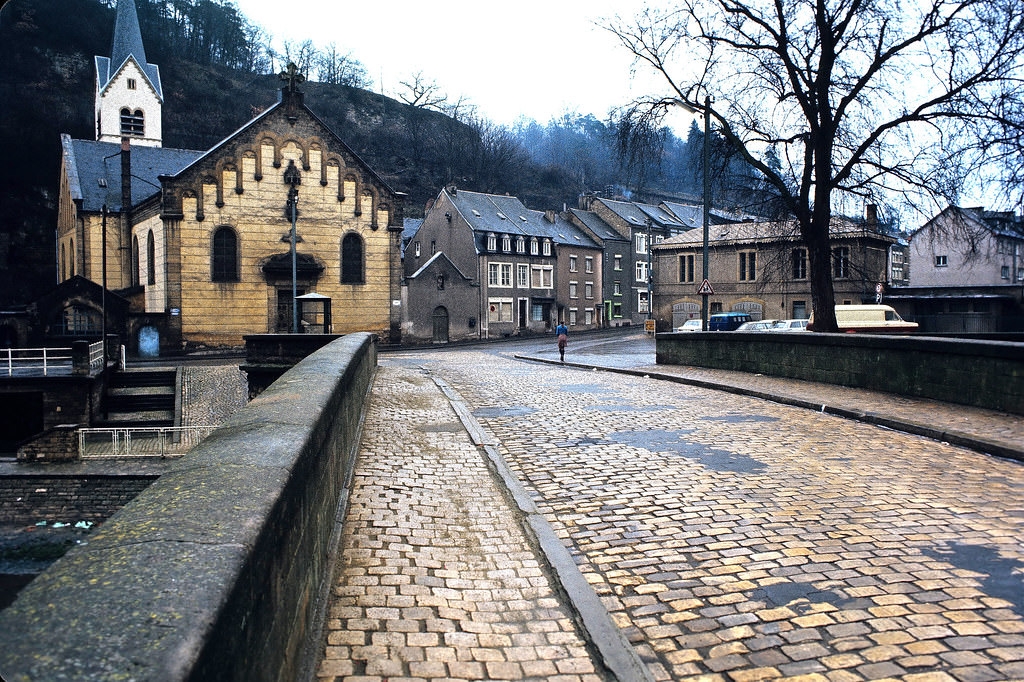
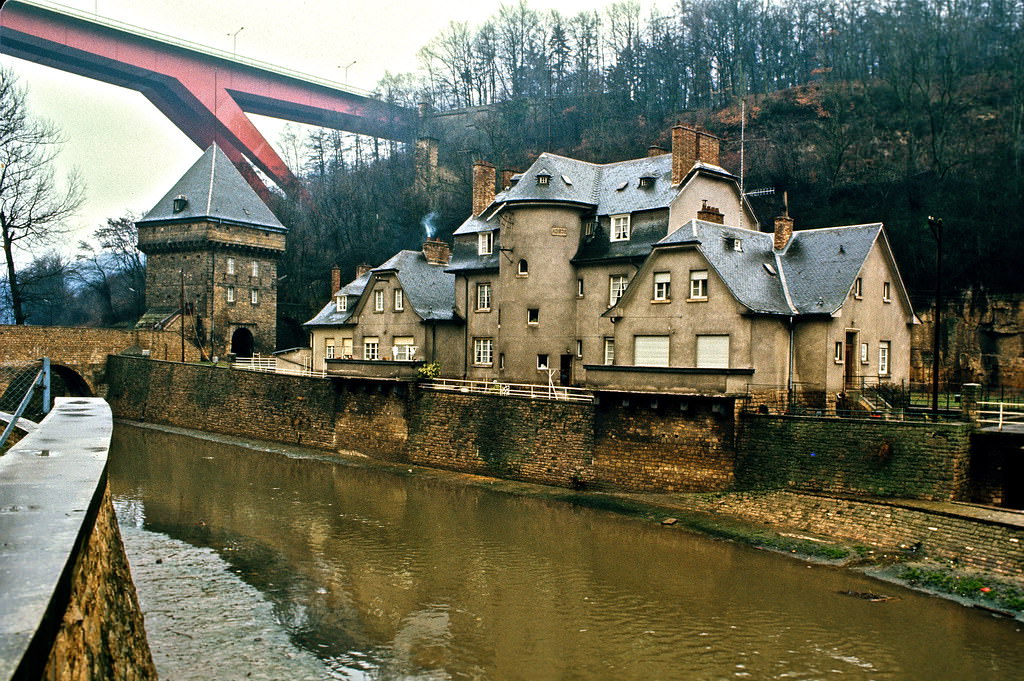
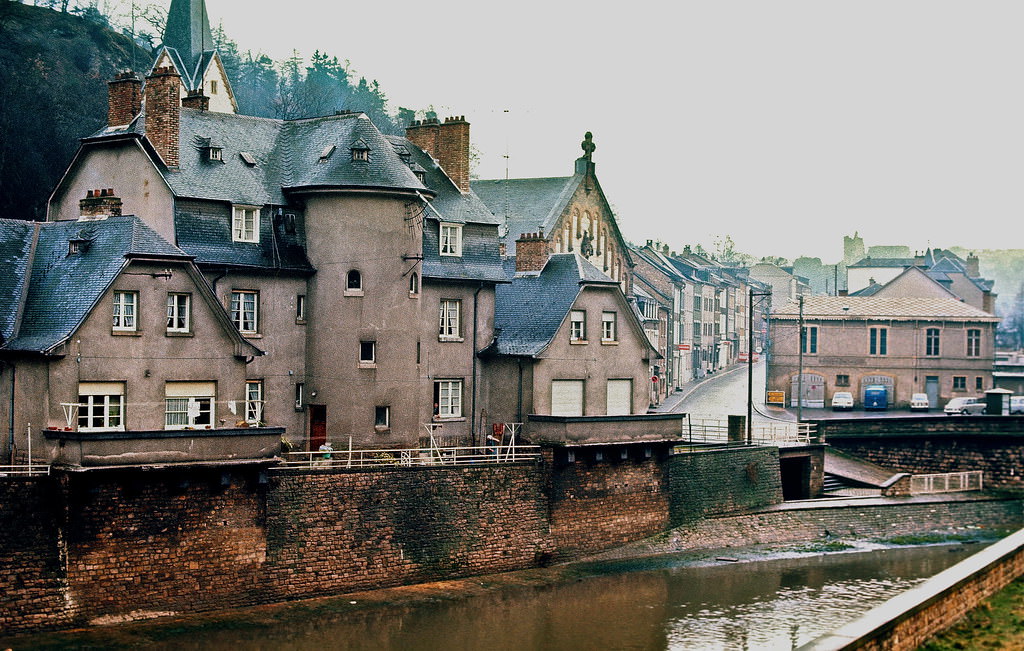
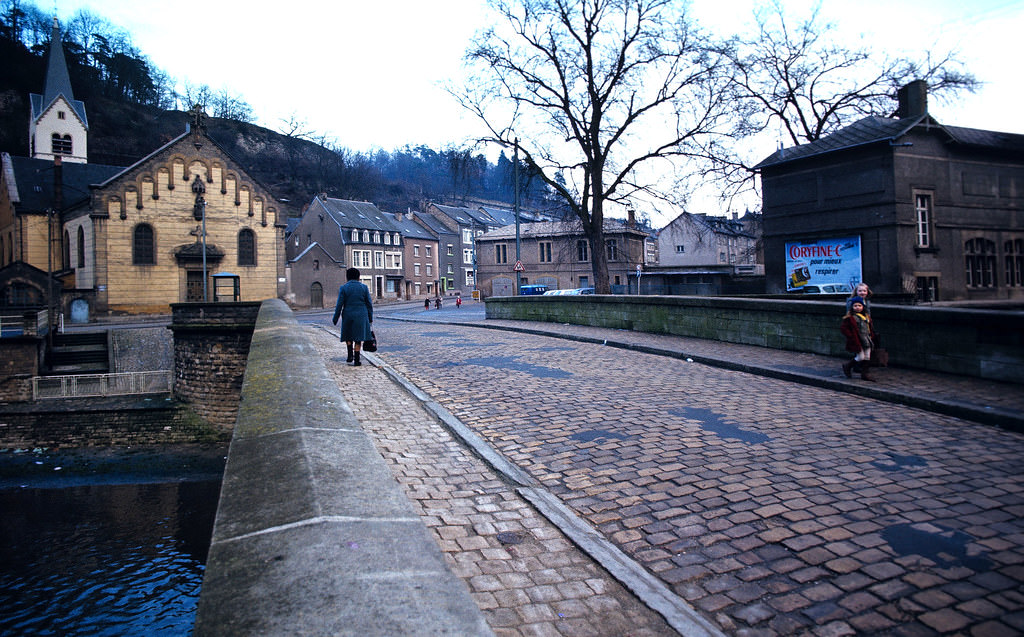
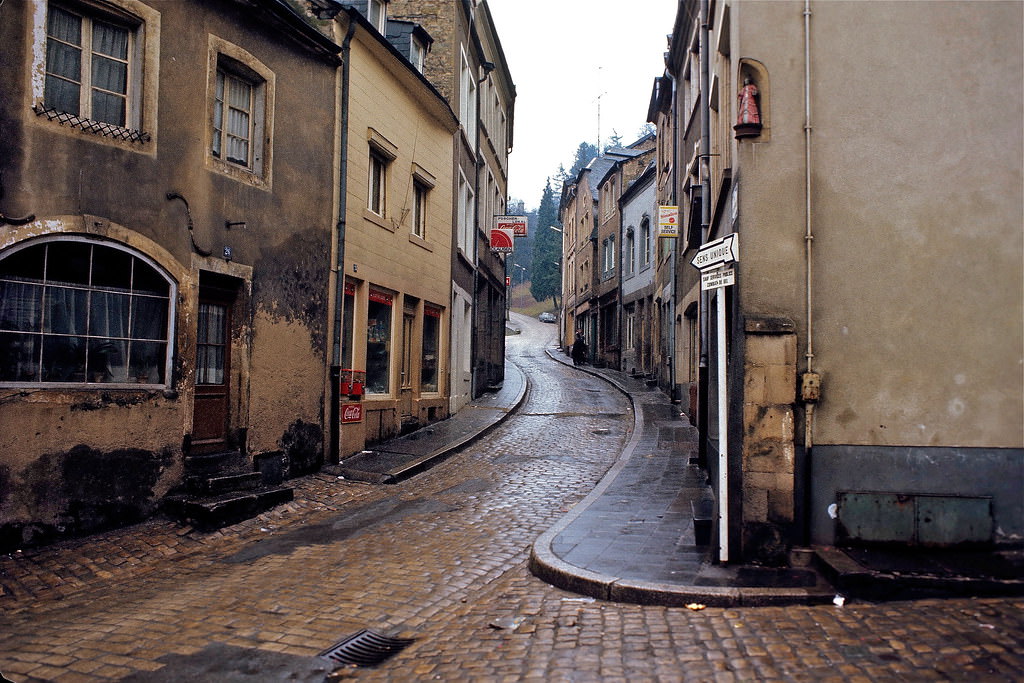
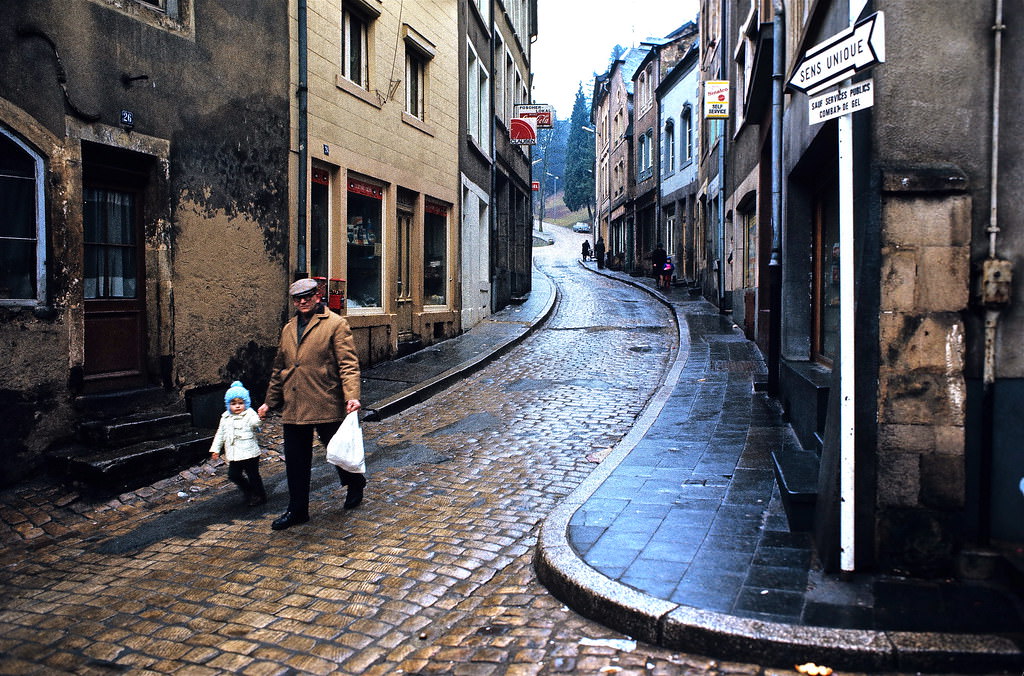
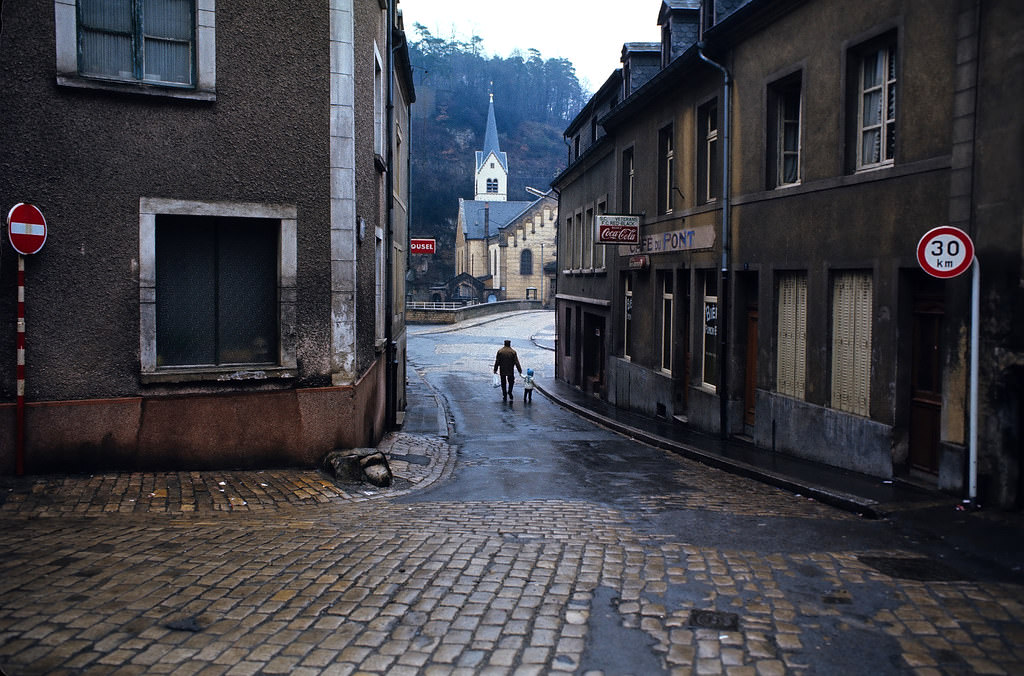
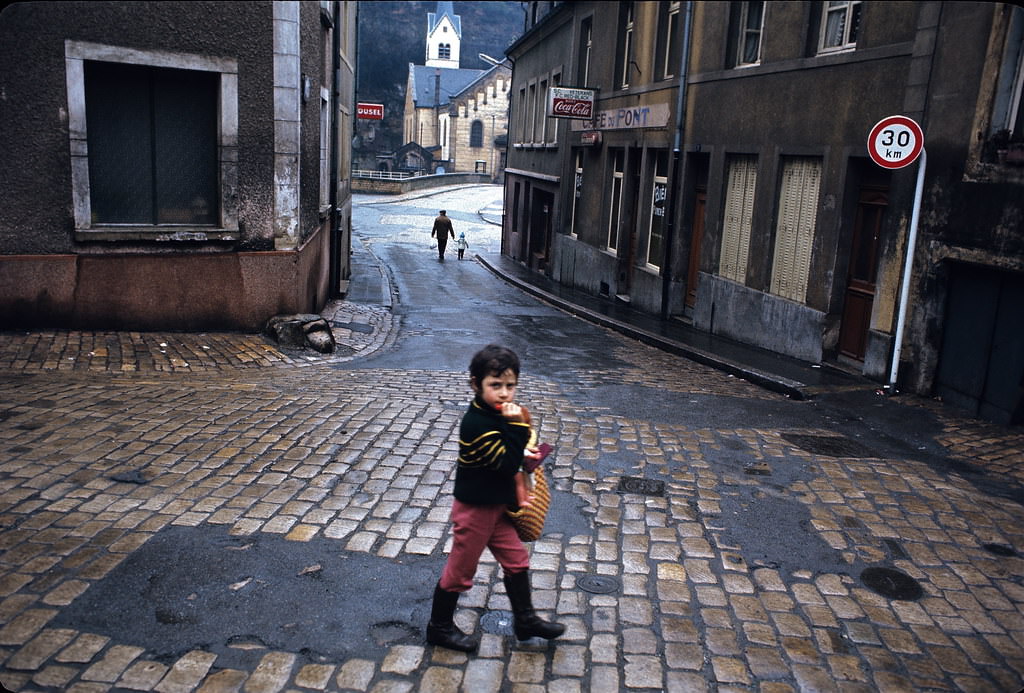
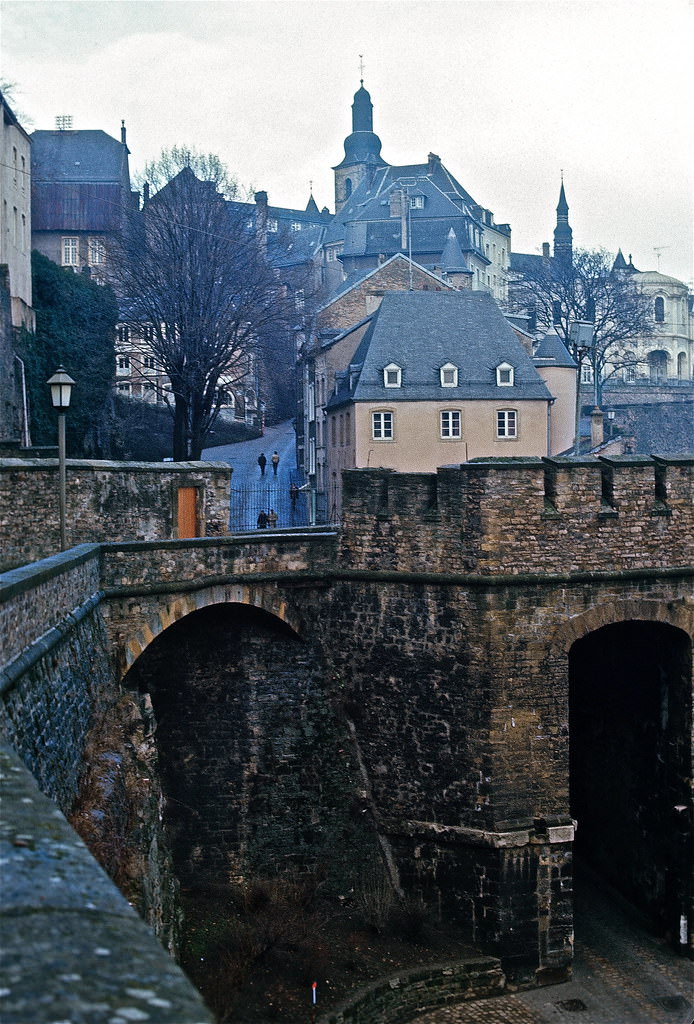
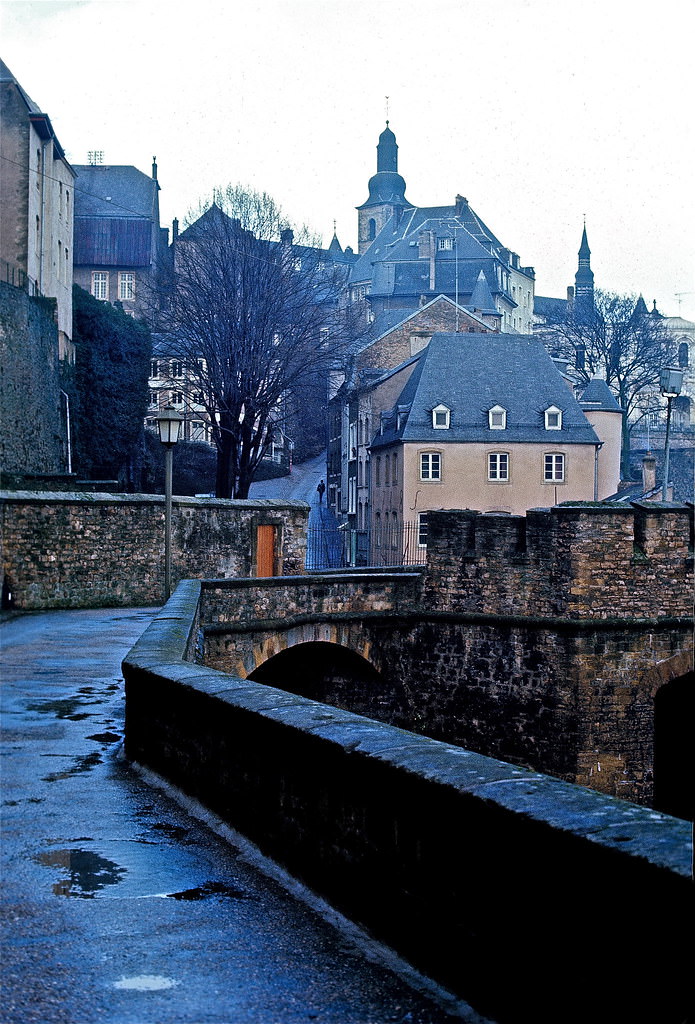
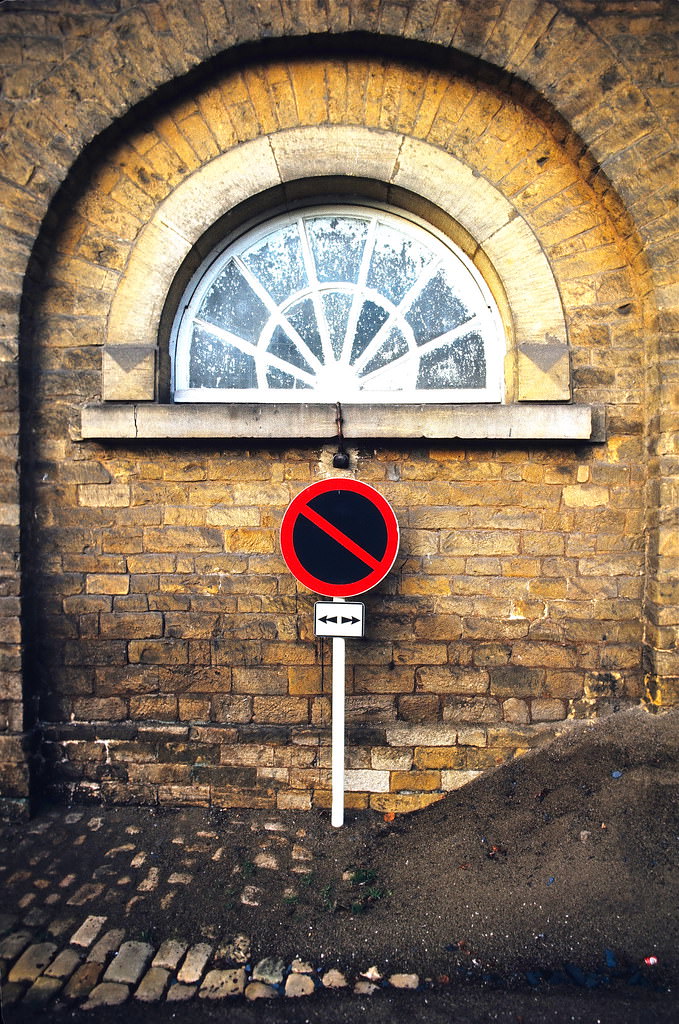
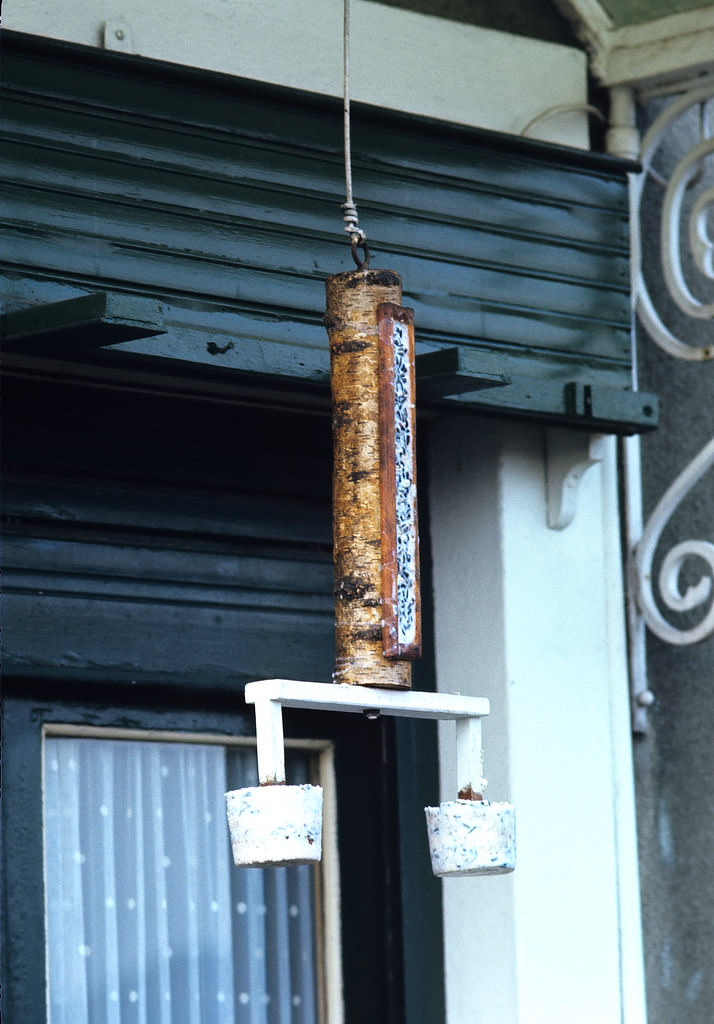
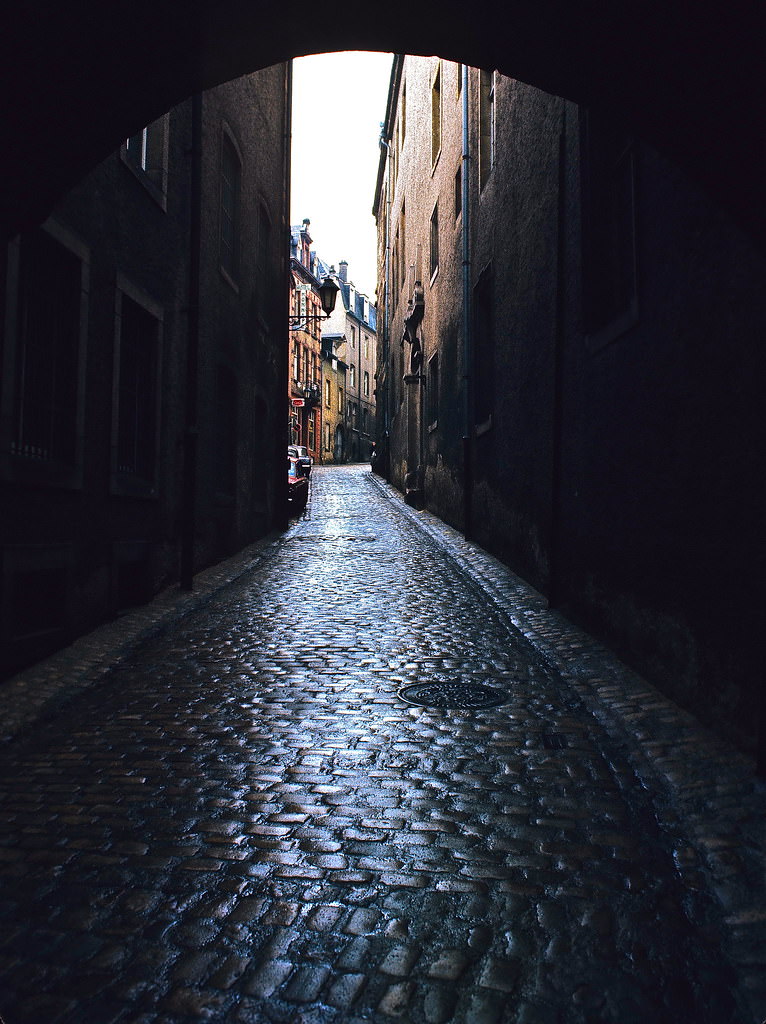
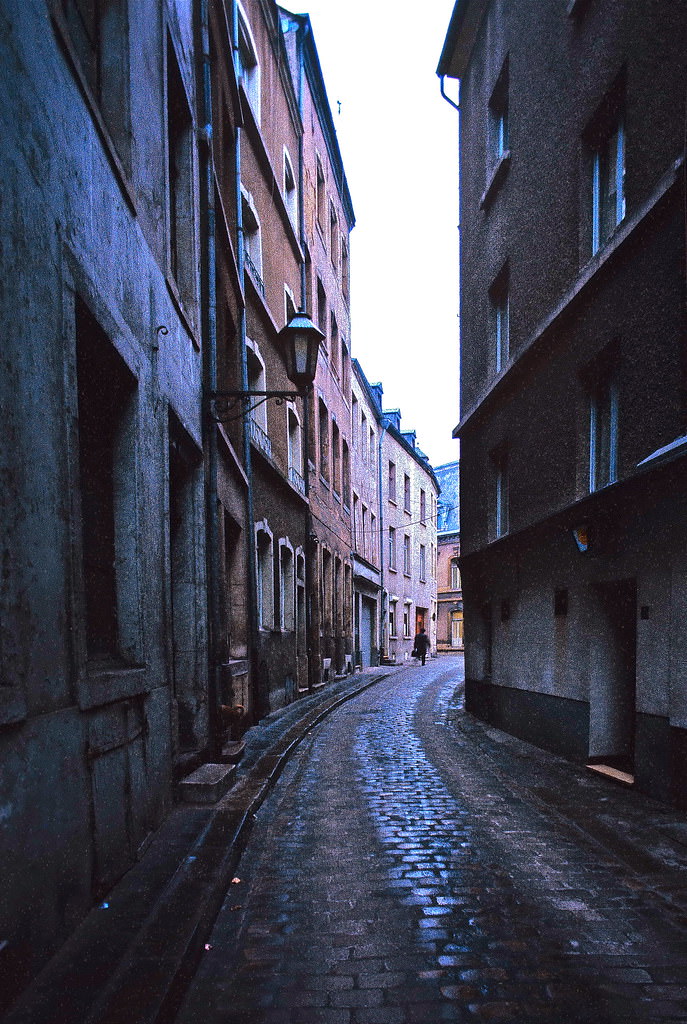
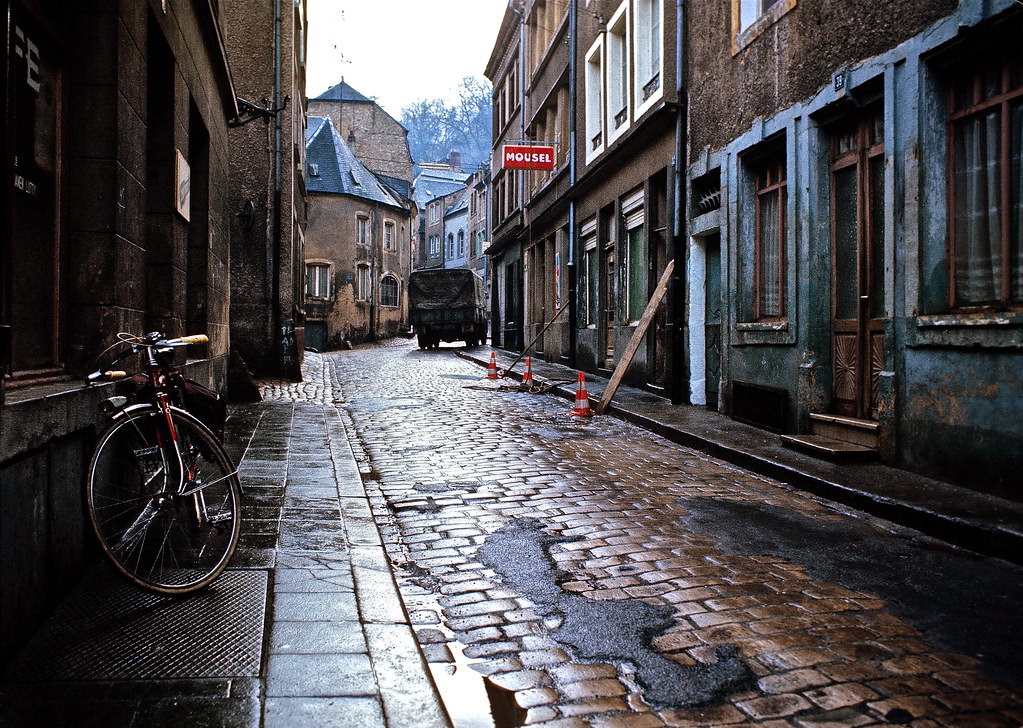
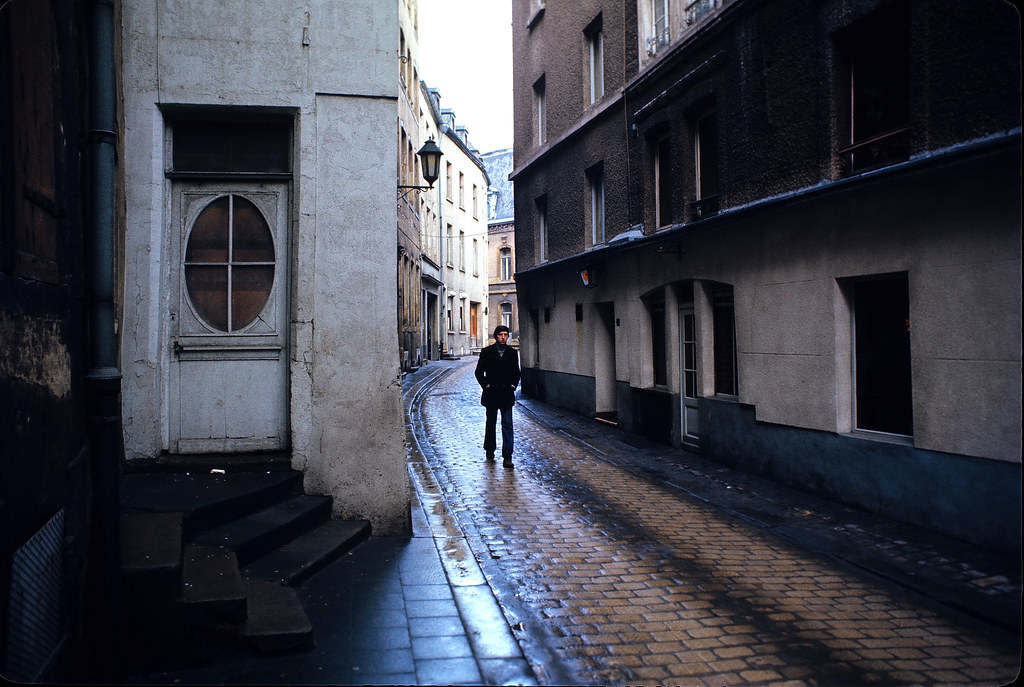
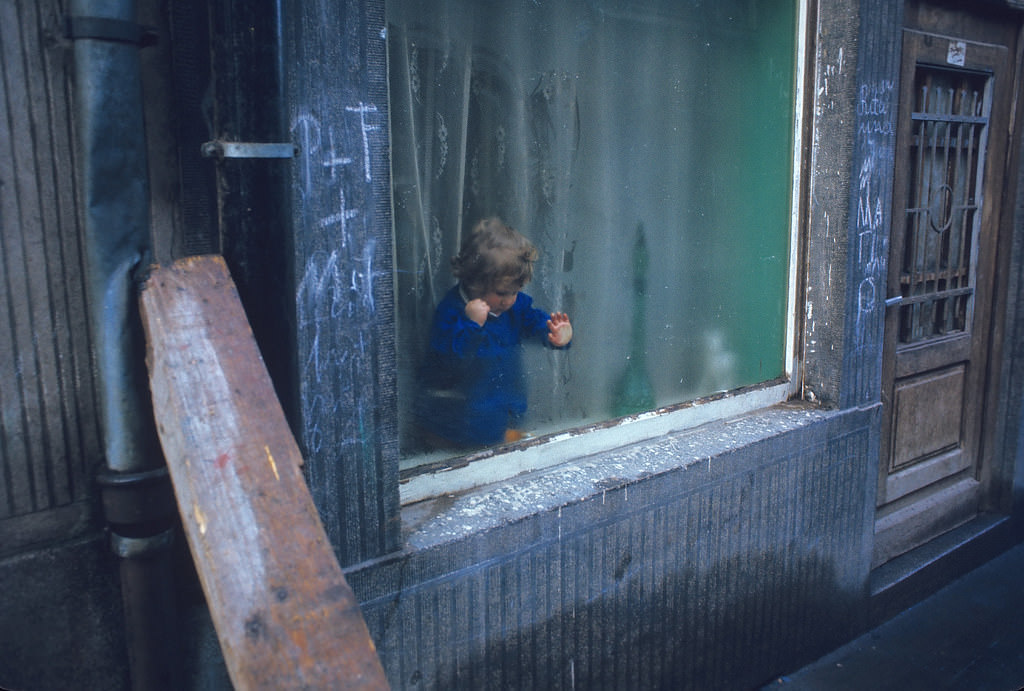
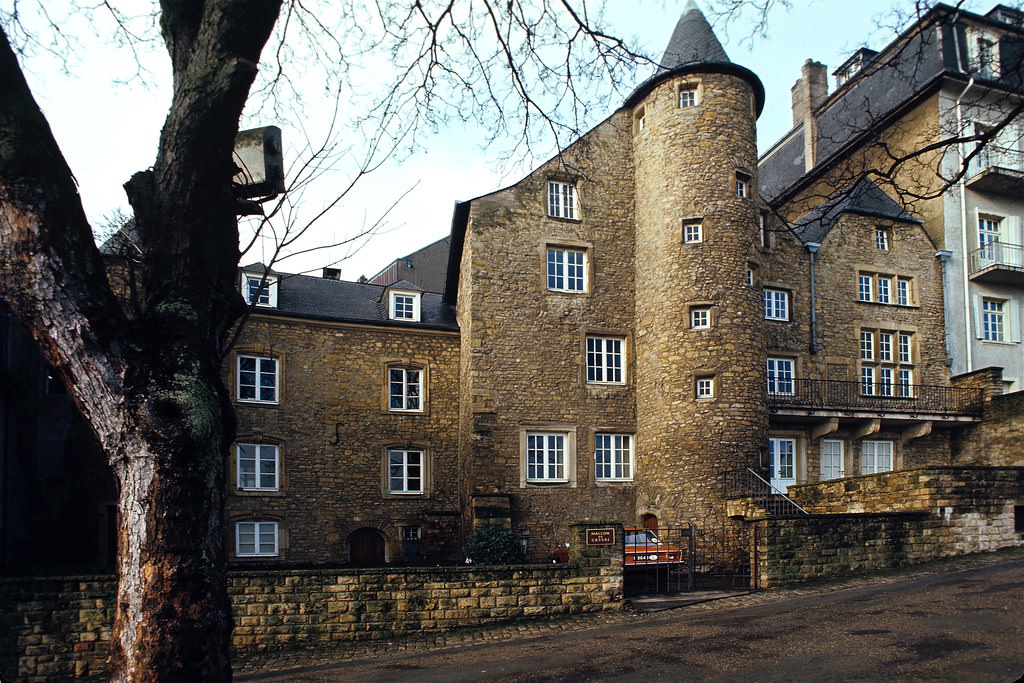
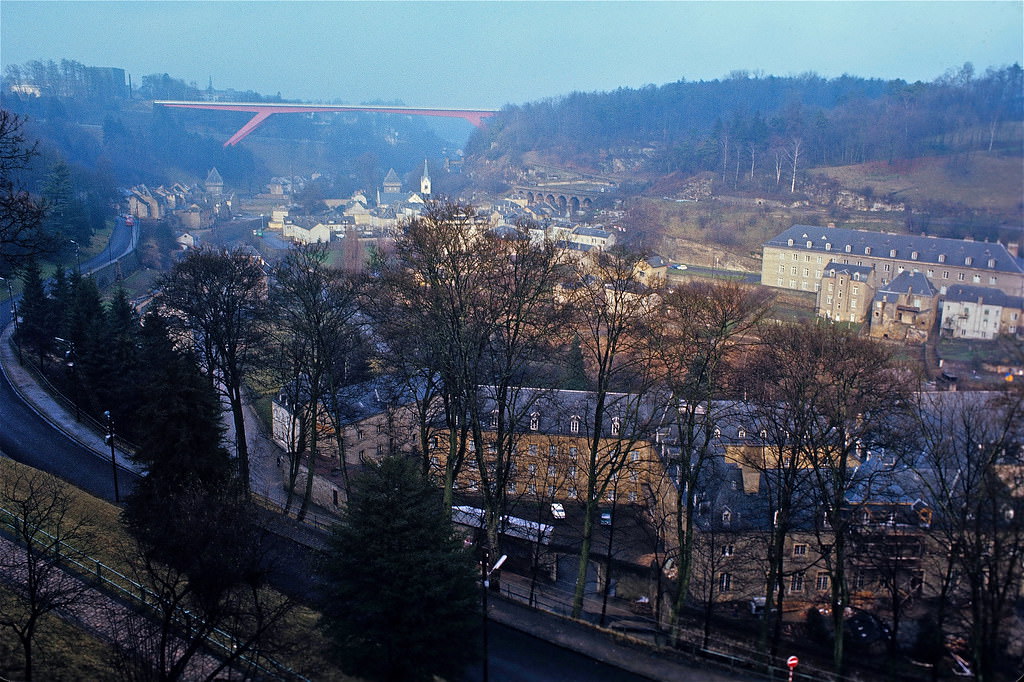
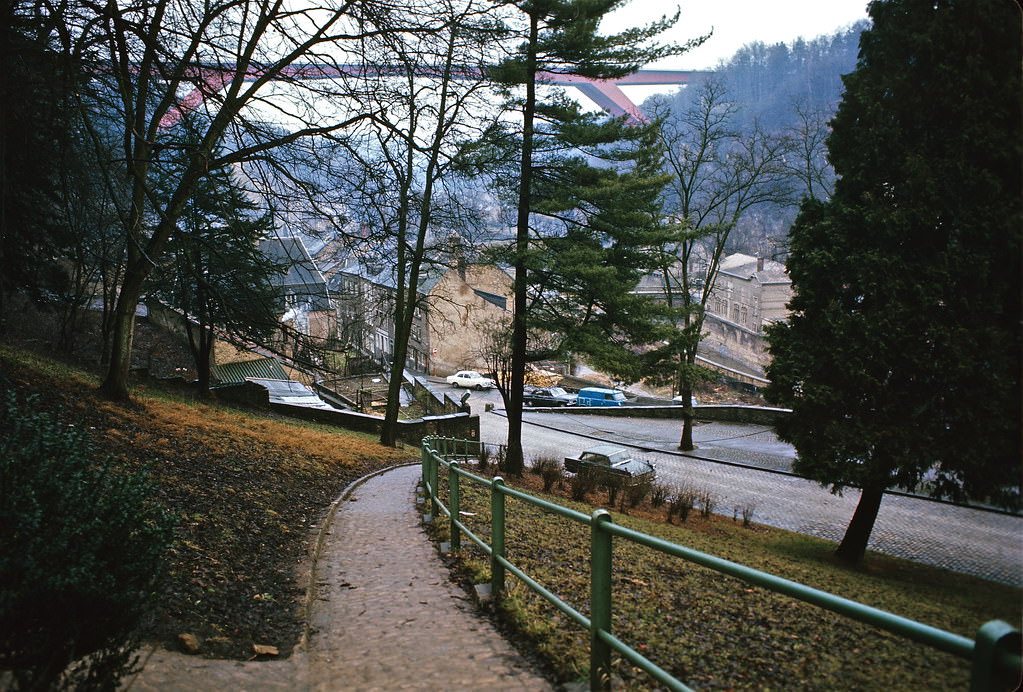
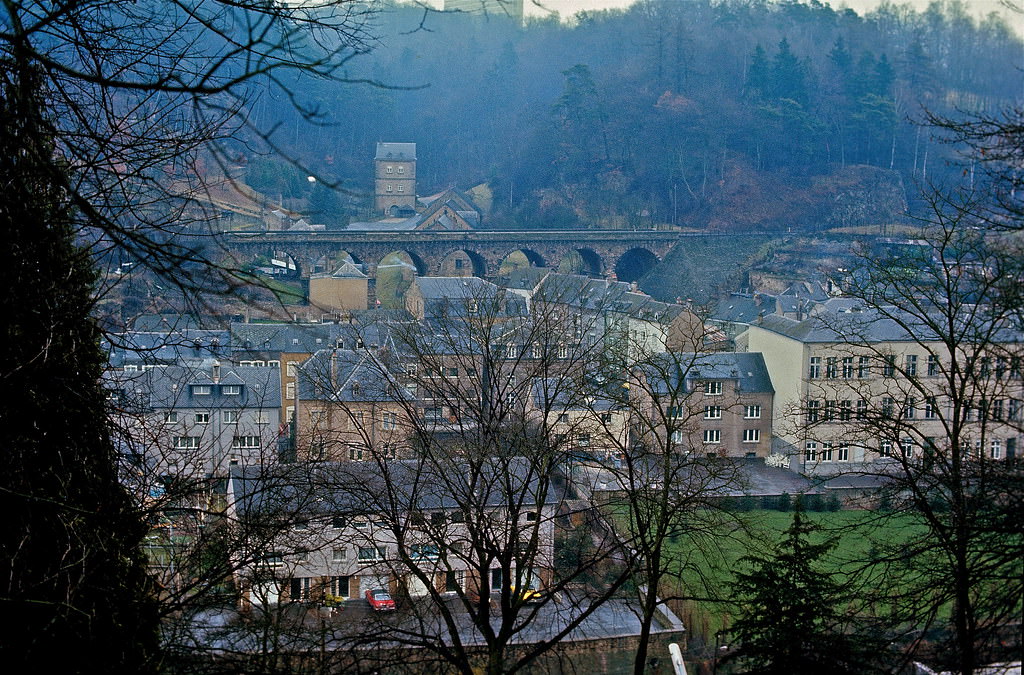
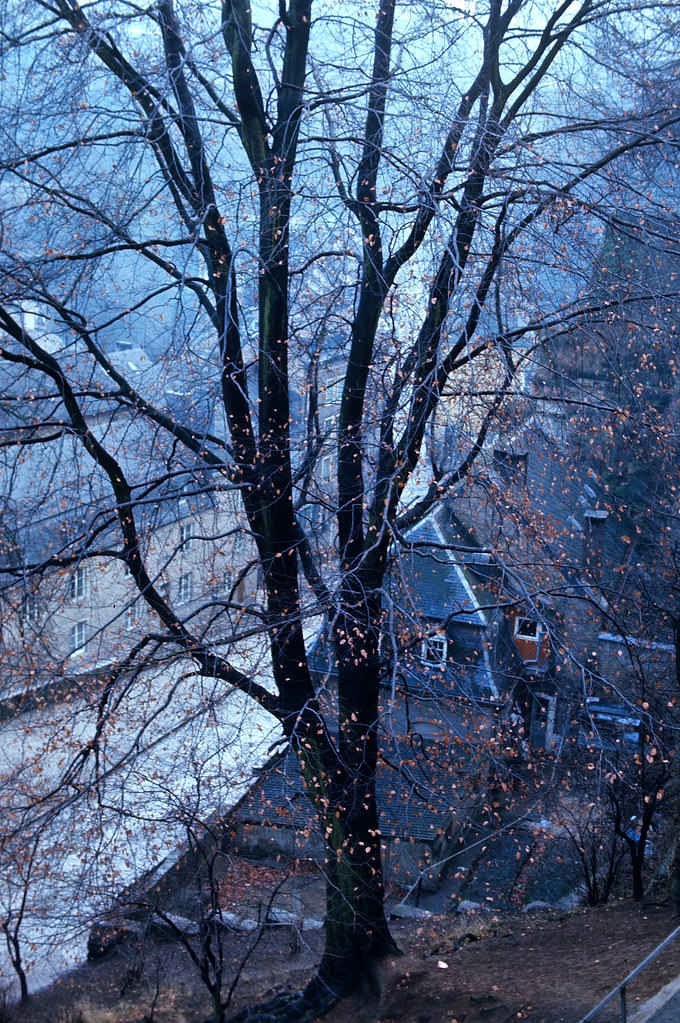
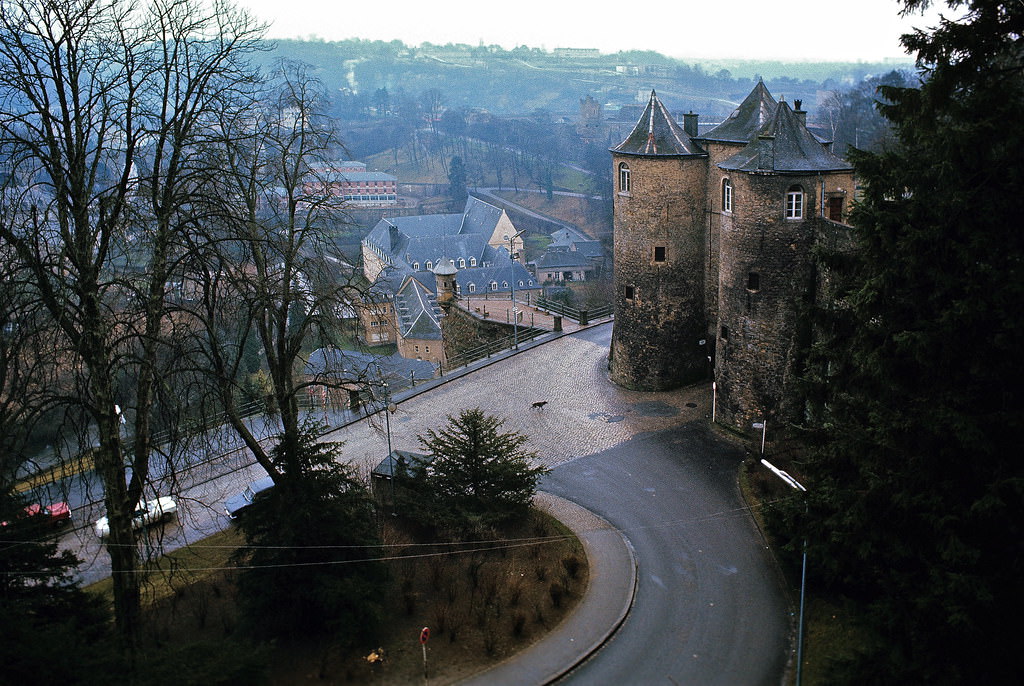
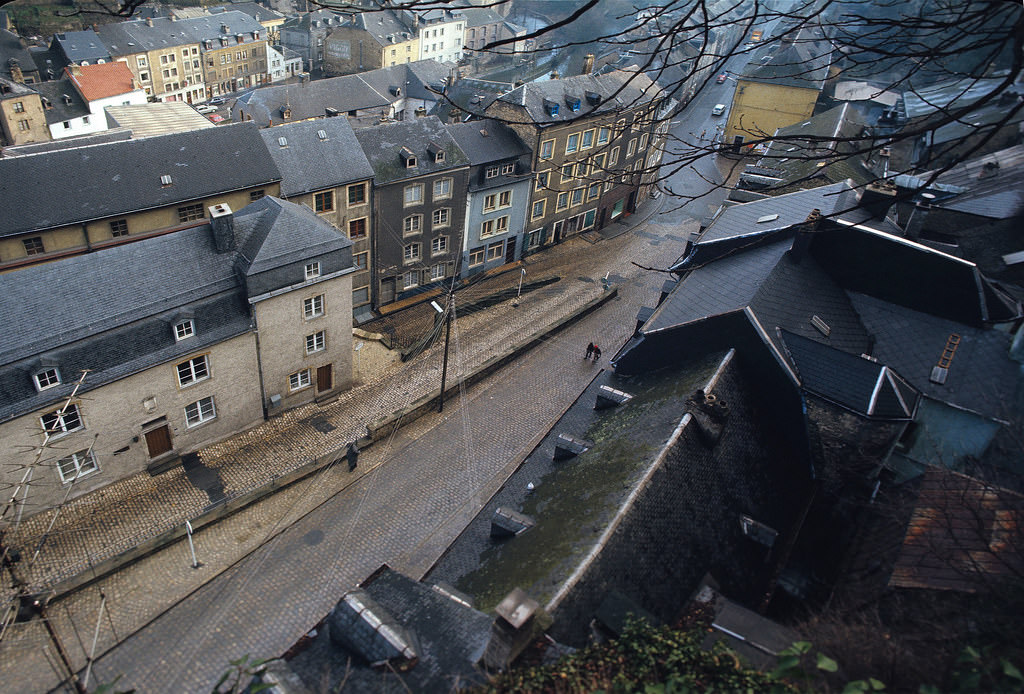
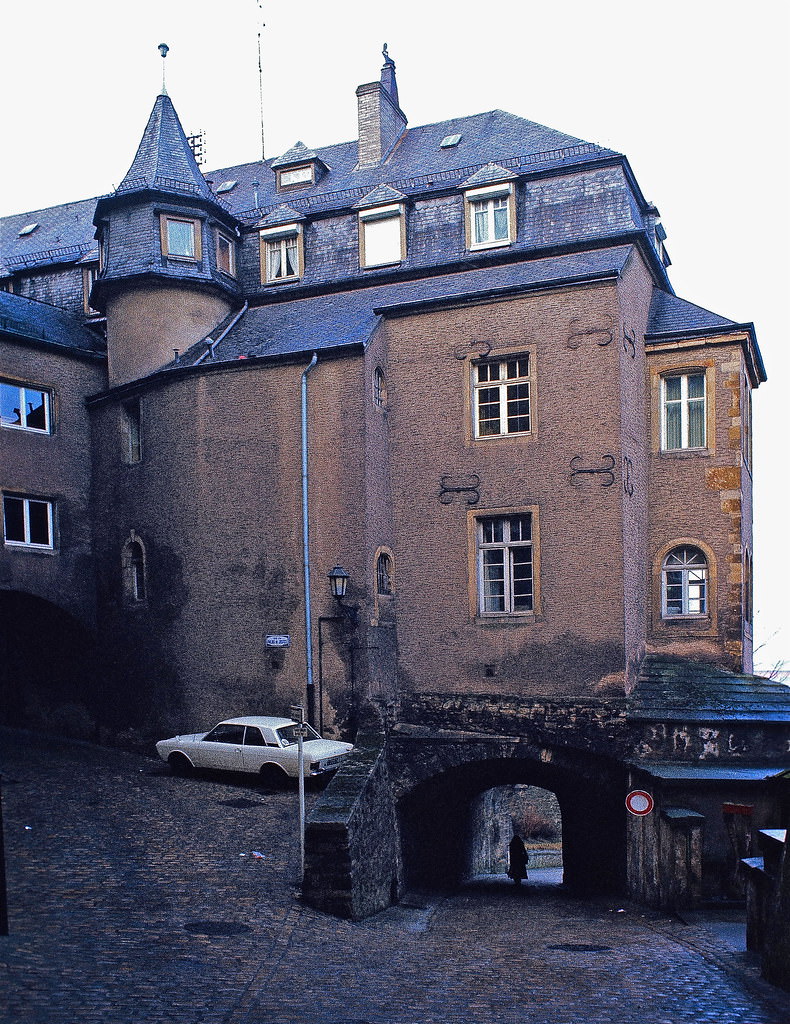
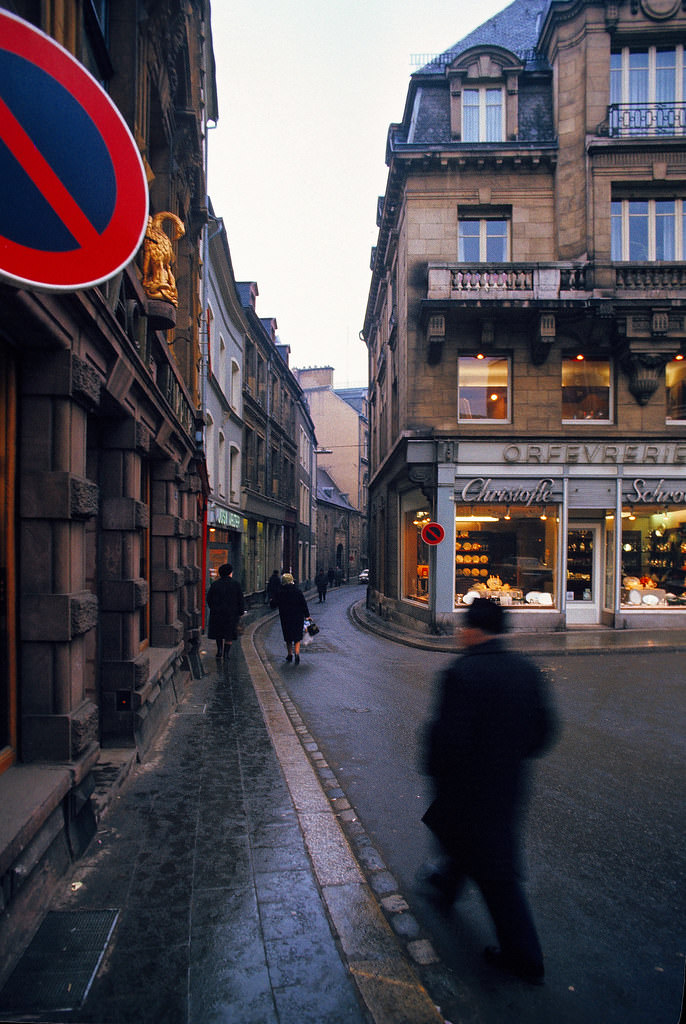
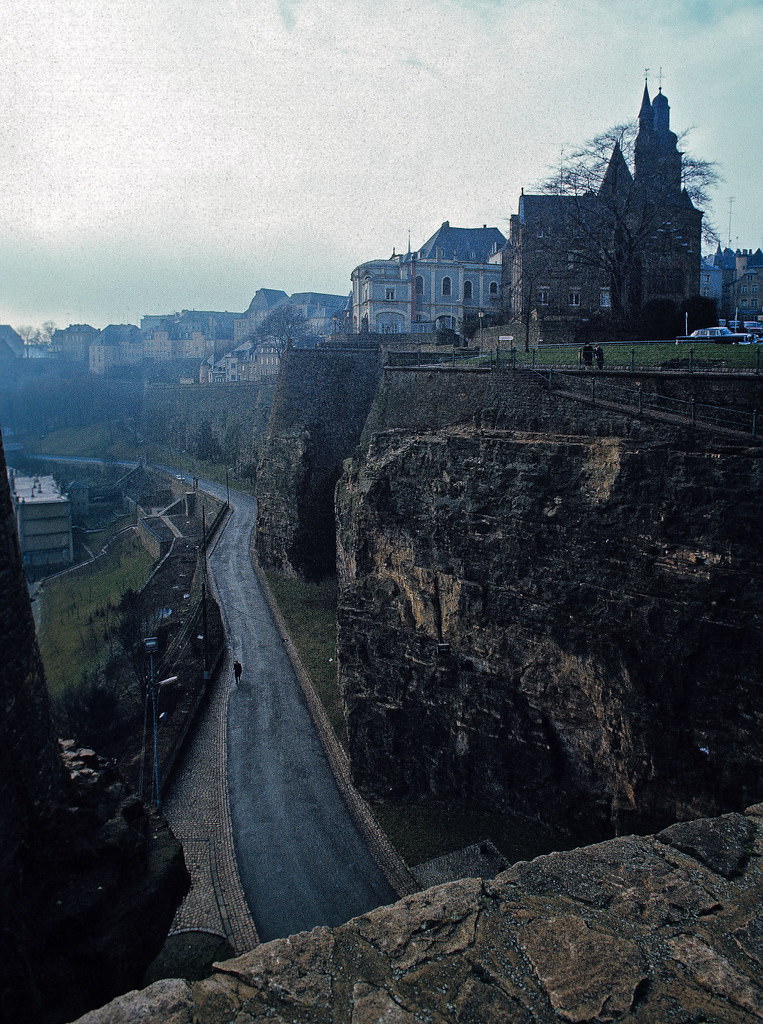
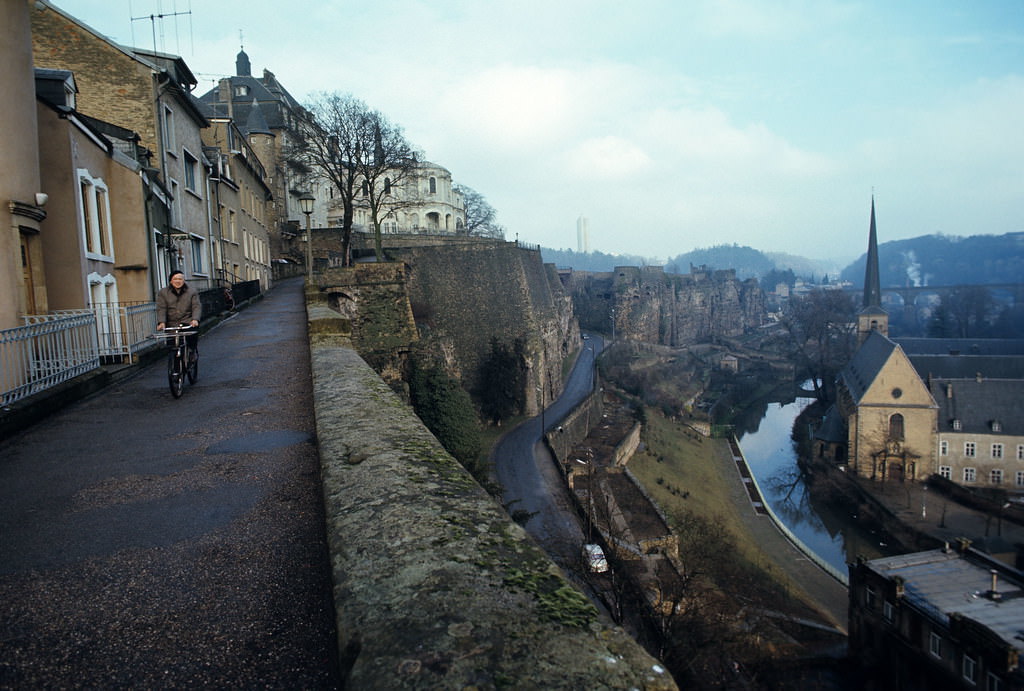
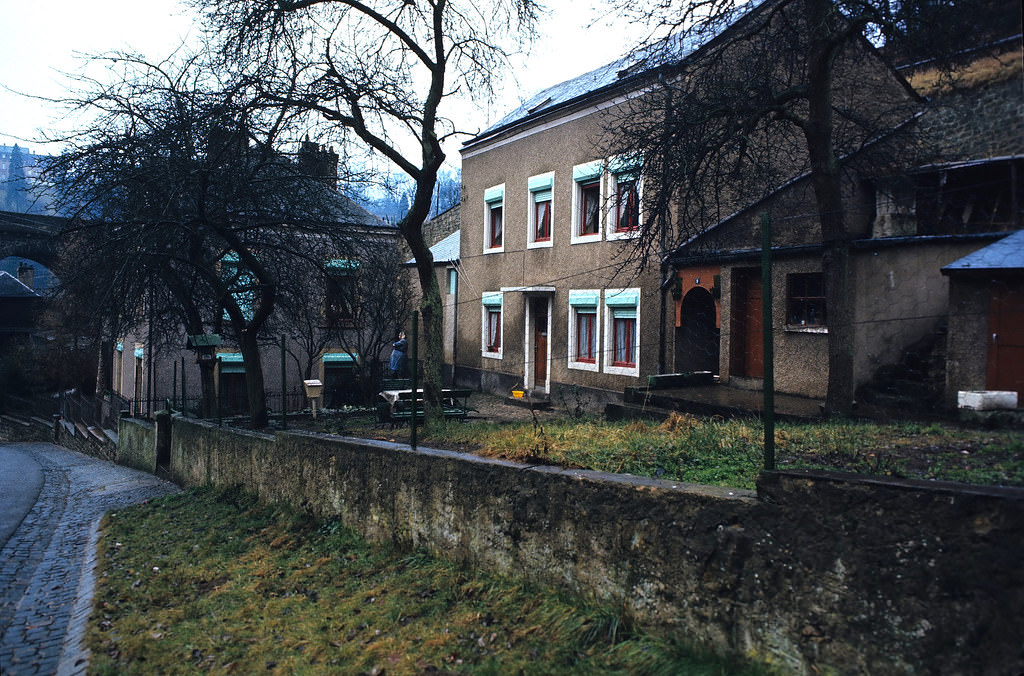
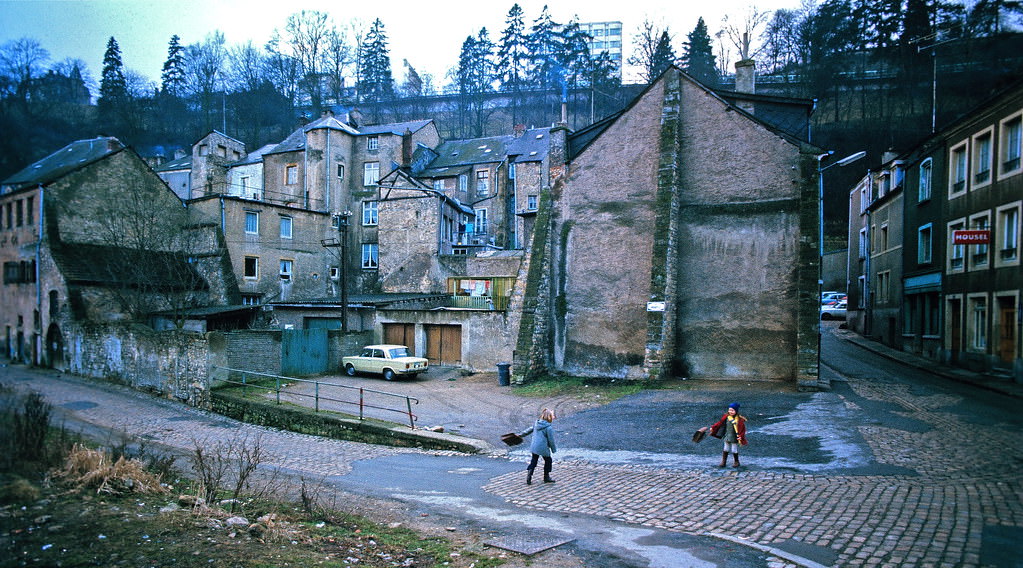

As a resident of a country where architectural heritage is destroyed to make way for “modernism”, it is lovely to see photos from half a century ago and recognize every spot as it is (almost) identical today. Luxembourg is one of the reasons I love it.